logicaluk
Posted a lot
   Every days a school day round here
Every days a school day round here
Posts: 1,373
|
|
|
|
Oh nice BX my mum had a goldy bronze gsa estate I loved it cant rember why we changed it for an even rarer 2 door astra estate, which i alway used to make me feel sick traveling in the back of, but i digress you mentioned about using waxoil to protect the subframe please read this first. www.bilthamber.com/media/downloads/PG-BH13-001.pdf I swear by the stuff easy to apply and so far seems to work very well, only thing ive tryed i didn't like was their seam sealer. Dan |
| |
Last Edit: Dec 2, 2018 14:32:21 GMT by logicaluk
|
|
|
|
|
|
|
May 11, 2019 11:39:16 GMT
|
|
Any news on this most epic of voitures...?!
It still stuns me...
|
| |
***GARAGE CURRENTLY EMPTY***
|
|
vulgalour
Club Retro Rides Member
Posts: 7,287
Club RR Member Number: 146
|
|
|
|
Likewise interested, since I'm now back in a BX of my own again. Happy days. 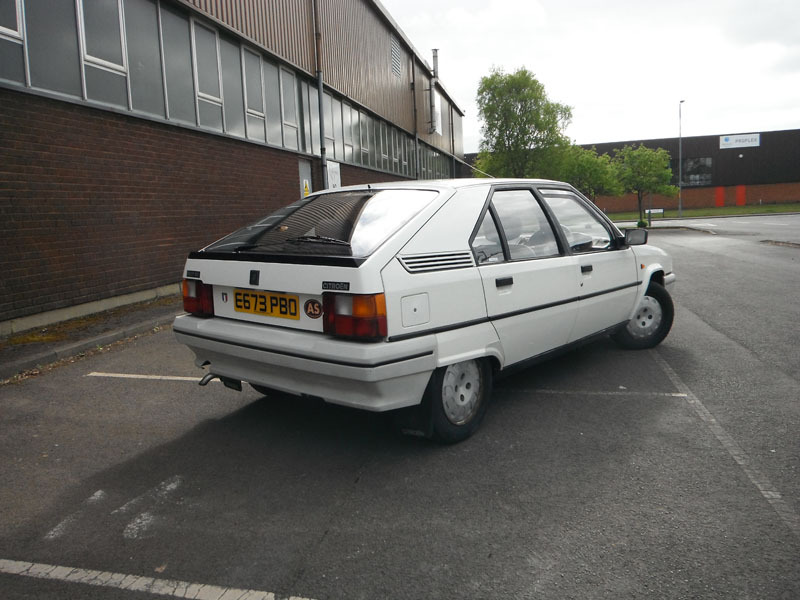 |
| |
|
|
kitch
Part of things
  Counting his chickens
Counting his chickens
Posts: 157 
|
|
May 21, 2019 12:59:18 GMT
|
Any news on this most epic of voitures...?! It still stuns me... It still exists! Got so much on the go that it hasn't had much of a look in. My plans to get it on the road this year are amounting to not-a-lot, as I bought another old TVR. It's still indoors and waiting. I bought a donor BX the other day, however! Will update when I'm able. |
| |
|
|
kitch
Part of things
  Counting his chickens
Counting his chickens
Posts: 157 
|
|
Nov 12, 2019 14:46:16 GMT
|
OK, so an update didn't follow shortly after. In my defence, it hasn't quite been a year since the last post! Not far off though; the BX is 36 years old in a couple of weeks! I've had so much going on (as we all do) that any spare time available on the old crock has been sparse at best. But, a workshop move-around prompted things to get moving again a little while ago, and I'm now moving on where I left off. I wouldn't say I was charging forward...more ticking over, but I've left it in gear. One of the first things I needed to sort out for this car, was another car. A donor car, in fact. Sad as it is to do it, the reality is that I will likely need quite a few parts over the course of this project (and another BX project that I'm doing...a thread on that to follow!) So it's a case of one car dies, but it saves two others, which would have otherwise been dead too. Enter E574 MYR! 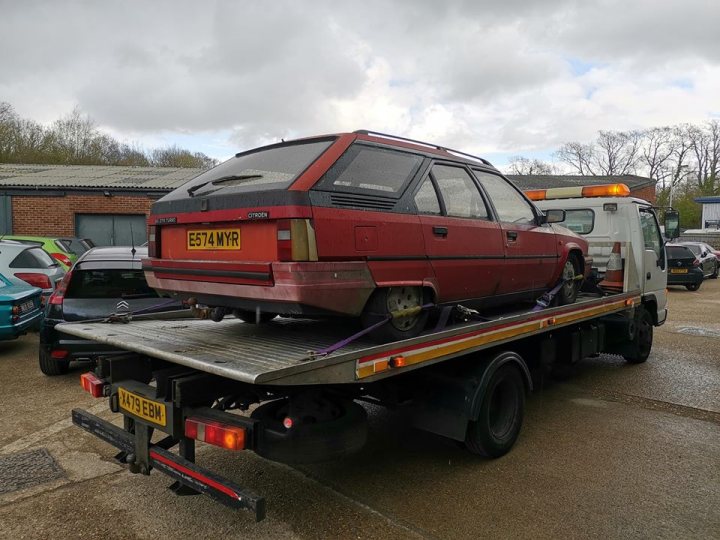 It pains me a little to do this, but here is £50's worth of BX. 200k miles on the clock; an engine that smokes and loses fuel, and sills that are made of air. It still pains me, however, as it's a pretty rare BX; an early turbo diesel estate specced as the 'DTR Turbo'. Effectively, it's an early GTi-specification car, but with a TD engine. The DTR Turbo was the TD version of the TRS. Why wasn't it called the TRD Turbo? They are, anywhere but English-speaking countries, but here, TRD looks like 'turd'! The DTR was replaced by the TZD Turbo, which is a trim lots of previous owners will likely recognise. Basically, it was one of the first plush turbo-diesel French cars; Cars that began the diesel invasion of the 1980's. Bow down to, or lambast it as you see fit... Probably less than ten of these left now, and it's going to be one less. 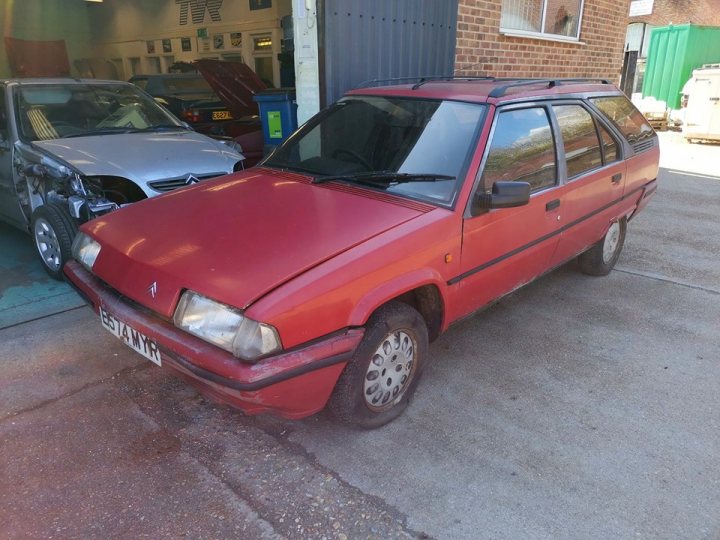 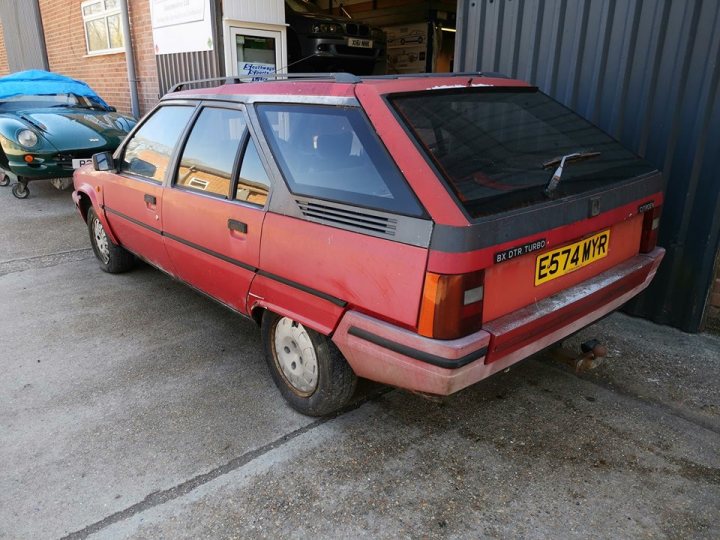 As mentioned, it is very rotten, and in most places...except one of the most common places for an estate: The rear arches. You see, the estate BXs weren't actually built by Citroen, they were assembled in Rorthais by Heuliez. As a result, rust protection wasn't quite as tough as on the hatchbacks! But, there is a reason I needed estate rear arches... You see, in BX-land, there are mk1 and mk2 cars (which many of you probably know). Mk1 (1982 - 1986):  Mk2 (1986 - 1994): 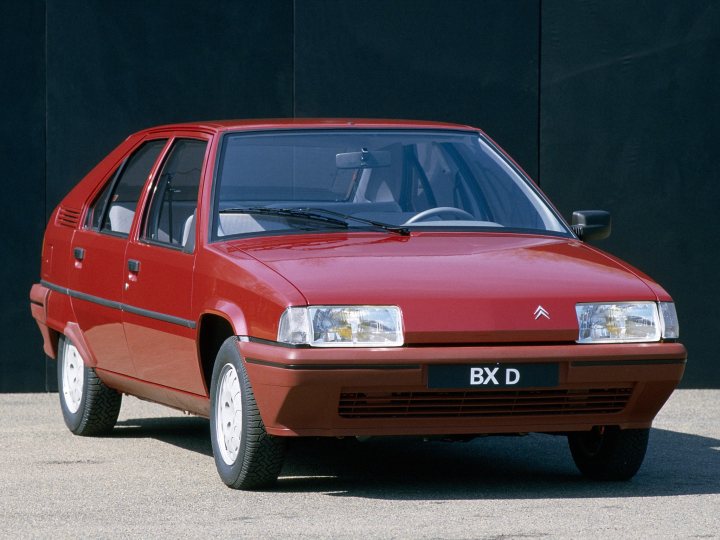 There are plenty of differences, such as the shape of the bumpers; The amber small front indicator vs. the larger clear one; The door mirrors; The dashboard (mk1 had the rocker switch indicators, while the mk2 was a bit more conventional (because people minced about the earlier car). There were plenty of differences, but one of the ones that many people don't spot, are the wheel arches. They're the same shape, but the mk1 has slimmer arches; The mk2's were more flared, presumably to make it look a little more aggressive/conventional, or possibly because they knew wider alloy wheels would be needed (the only mk1s with wider alloy wheels were the Sport and 4TC, and neither had regular wheel arches!) However, nobody thought to tell Heuliez!* 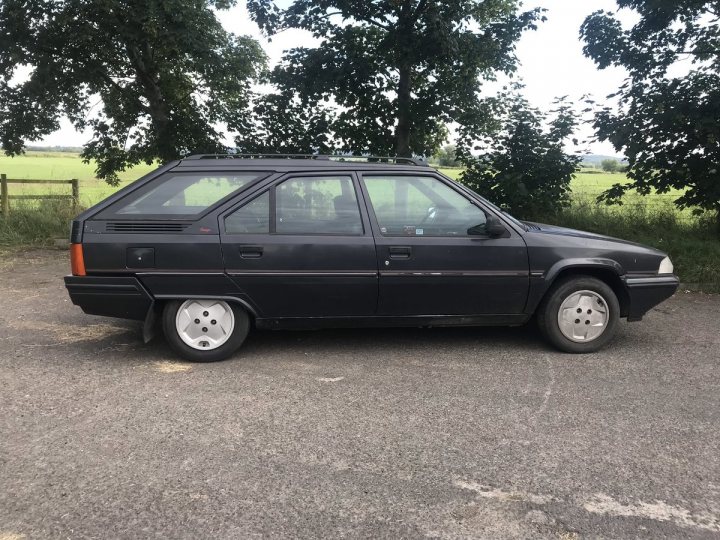 Mk1 rear...mk2 front! *Well, they probably did, and there were probably plenty of communications between designers, engineers and senior bods from each company, with various meetings at boardroom level and detailed analysis of the wheres and whys and why nots and...stuff. I'm guessing it wasn't an accident, I just don't know the reason why the estate never received the mk2 rear arches. Maybe Heuliez wanted to charge more to make new pressings...who knows! Someone, I expect, but there's no jeopardy or lolz in that, so we'll just assume Heuliez forgot because they were drunk on wine and cheese. No wait, is that racist? I'm not sure. I don't think it is. It's like suggesting Parisians are romantic, or Italians passionate, or Germans....just..., well, German. I'm waffling now, but I'm guessing you worked that out.So, here are the mk1...no, mk2...well, it is a mk2, but it's an estate, so...it's like a mk1.5? Well no, I suppose it's not, because that would insinuate the arches made up 50% of what constitutes a mk1 or mk2, and they don't, as I outlined above. I guess I'll need to break the car down mathmatically, and figure out what ratio of a BX constitutes it being a mk1 or mk2, and get back to you with an amended 'mk' number. 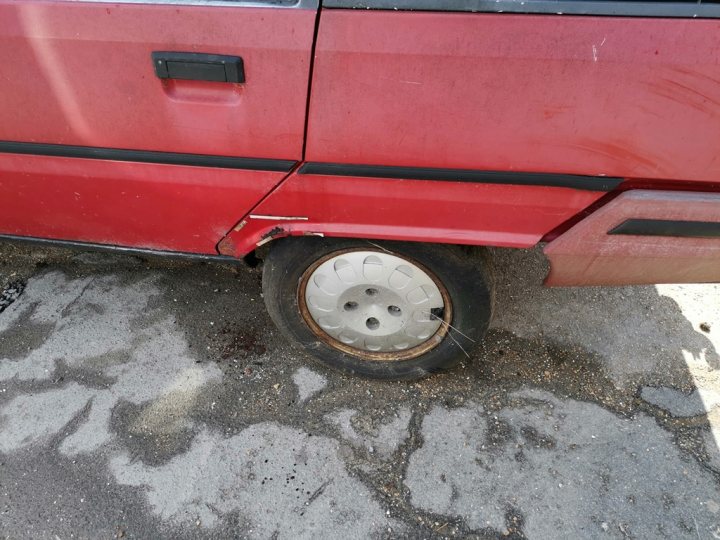 So, rather unusually, these are in pretty good order, which is more than can be said for my TRS...  And, because I've spent so long twattering on about cheese, wine and racism, I've run out of time to say what I was going to say, but it's technical geekery and refurbishing old stuff. I'll have to pick it up tomorrow or something! I'm not stoned, honestly! It's just how my mind works, and its tiring! |
| |
|
|
vulgalour
Club Retro Rides Member
Posts: 7,287
Club RR Member Number: 146
|
|
Nov 13, 2019 22:16:20 GMT
|
|
Ooh, an E reg BX being broken for spares, colour me interested! That is, if there's anything left once you've picked it clean of bits you need, of course, and you don't mind me being cheeky by asking.
|
| |
|
|
kitch
Part of things
  Counting his chickens
Counting his chickens
Posts: 157 
|
|
|
|
An update on the rattly old red rotbox is well overdue, mostly on account of the fact I started it a couple of months ago, but never actually finished it! (apologies if this is a bit hap-hazardly written, as I'm filling it in inbetween actually working!) Anyway, I'm pleased to report things with the BX TRS are good. There have been some ups and downs (including the suspension), but on the whole, it's been a positive period. So, back in October, I was still pratting around with that front subframe (did I mention it's a rare one?! Oh.) The fabrication and repair work was now done, but as it sat, it was a bare subframe, and that wouldn't be much use. I therefore decided to repopulate it with the various componentry that used to live there. The bearings were already in place, but I knew the most time consuming piece was going to be the pipework. Despite my line of work as a sort-of-restoration-guy, I hadn't done much pipework on Citroens before. It was one area I'd never really had to address in all the years of knobbing about with them, but, I'd repiped the brake, clutch and fuel circuits on plenty of TVRs, so I figured that as the Citroen flares are normally easier to do, and the pipe thinner, that it should be a piece of cake in comparison. And, it was! Sorry, no jeopardy here. To begin with the pipework, I needed to have ready all the components the pipework routed to. As this BX doesn't have power-steering (a blessing to my timescales), I didn't have quite as much fart around with as I otherwise might have done. But, I did have the majority of pipes to sort, as most of the originals were rotten clean through...or away entirely! 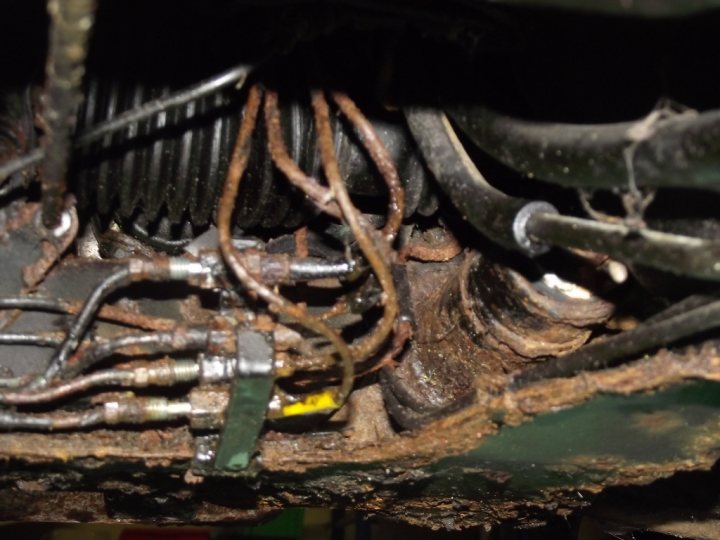 Later BXs used a black plastic coating around the pipework for added corrosion resistance, but earlier cars like this mk1 made do with bare steel. It was a good quality steel, sure, but it was steel all the same. The blustery Welsh coastline had clearly proven too much! But now, it was time to start getting dirty, rusted parts of unknown servicability (that I'd removed about 3-4 years ago) together, and seeing what went where! The first part, was the hydraulic safety/security valve. On a hydropneumatic Citroen, the majority of the system is simply hydraulic. The pneumatic element only comes into play when you get as far as the springing of the car, so unless you're dealing with spheres, it's hydraulic. Everybody seems to act like they're too complicated, but that's only if you're ignorant. If I can grasp it, anybody can grasp it! Some green blood (aka LHM) sits in a reservoir (a round green metal one mounted in the offside inner wing), where it is drawn through a rubber hose by the high-pressure pump, and compressed until it's very, very fizzy (about 1400psi fizzy). Once it's fizzed up, it's directed through a large-bore (6.5mm I.D.) metal pipe. On a car with power steering, it goes through a priority valve for this first, but being as this car doesn't have that, we'll keep it simple! So, at the other end of this metal pipe, is the pressure regulator (the thing that goes pssshhhh-tick every so often). This sits on front of the gearbox, and has a green sphere (or rust-coloured sphere, in my case) screwed onto it, like you would an oil filter. The pressure regulator allows the pressurised LHM through a small port and into the sphere. The sphere itself is very similar to that you'd find on end of one of the wheels, but its role is slightly different; It's basically a small but very strong balloon! Imagine you have a generic balloon, the mouth of which is inserted onto a tube to allow the balloon to exhale. There's no knot, just your finger and thumb acting as a human 'tap' (so you could release it slightly and let the balloon down....and make funny squeaking noises!) But in this case, rather than blowing it up conventionally, it's got it's own supply for the air you pump, which goes in somewhere else, not the mouth of the balloon. So, the following alternative theory isn't exactly how it works, but it's the simplest way to imagine it (making this up as I go along): * Your leg = the engine * Footpump = hydraulic pump * Pressurised air supply direct to balloon = pressurised LHM from the engine-driven pump * Balloon = accumulator sphere * Four small balloons = suspension spheres * Four noisy whistles = the brakes * The pinching action of your finger and thumb = the pressure regulator * The tube the balloon is mounted on = the circuit to the safety valve * The safety valve = your boss Your job is to operate the footpump, and keep the balloon pumped up to a certain size. Easy, right? If it goes a bit flat, you just pump a couple of times - job done! You've barely got to do anything, because unless you have a leak, the balloon will pretty much just stay inflated. However...there are also four smaller balloons in each corner of the room, which are all at the end of the pipe your balloon is stretched onto, and they also need to be regulated to a certain size. You have to inflate those by momentarily releasing and then reapplying your grip on your balloon, which in turn inflates those balloons a bit (and makes a 'psshhh-tick' noise), but of course, that also flattens your balloon in the process. Annoyingly, every now and then, someone who calls themself Mr Bump comes along and tries to jump on those four balloons, at completely random intervals. What a knob! So now, you're probably going to have to keep pumping more often, and releasing pressure when you need to. How tiring! And then, on top of this, there are four whistles. For some reason, these whistles are deemed to be very important, and although nobody is jumping on them, you are told that, occassionally, these whistles need to...well, whistle, and loudly! You don't have to worry about operating them, but you do have to make sure they have a sufficient supply of air that they'll actually make a noise when somebody else does. So now, your easy job has become complicated. Your boss has come along and informed you that, to help, they'll divert the pressure to the whistles and the four balloons independantly, so that one doesn't affect the other too much. All you need to do is keep the pressure up. However, if you don't keep the pressure up, the boss is going to stand on the pipe that goes to the whistles (so that they hold pressure briefly long enough to be blown for a short while longer), and forgets about the pipe that goes to the four balloons. These go flat, and the idiot Mr Bump can jump on the hard ground as much as he wants. Then the boss informs EVERYBODY that you've let the pressure down, with a big red stop light. I'm not smoking something, honest! That's just the easiest way to imagine it. I might go and give the pump and the regulator a quick cuddle now...that's a quite a curse word life  Anyway, back to reality, and this little valve is the first port of call from the green blood, once it's been whizzed up to around 1400psi, and released by the pressure regulator. There's a sprung valve inside, which requires a minimum set pressure to operate (the minimum set pressure the car can operate). If the pressure coming from the regulator (which on a healthy system has pretty much just been stored in the accumulator sphere) is sufficient, the spring is overpowered, and the valve remains open to both the brake and suspension circuits. Happy days. However, if there is a drop in pressure (due to the engine dying and the pump stopping as a result, for example) as soon as it becomes lower than the pressure of the circuit, the valve slams shut and isolates the pressure in the braking circuit with everything that the accumulator had left. It also throws on the STOP light (which is what the little sensor is for). So, if you lose the engine, or the hydraulic input from the pump/regulator, maybe even down to a snapped belt, you've still got enough braking pressure left to halt the car safely. The suspension has to make do with whatever it had left, but a bumpy car you can stop is better than a smooth car that you can't. So, let's meet the little valve (aka The Boss): 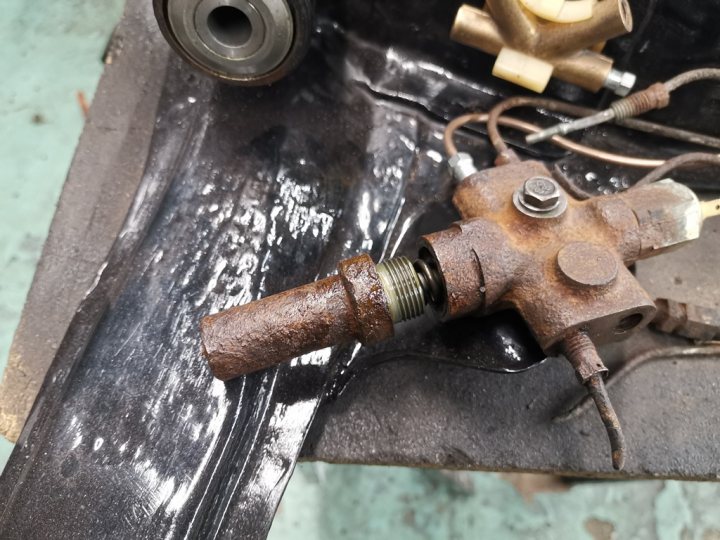 | In this image, I've unwound the cap that holds the spring in position, and with it removed (having retreived the spring after it shot off across the workshop at tremendous speed): 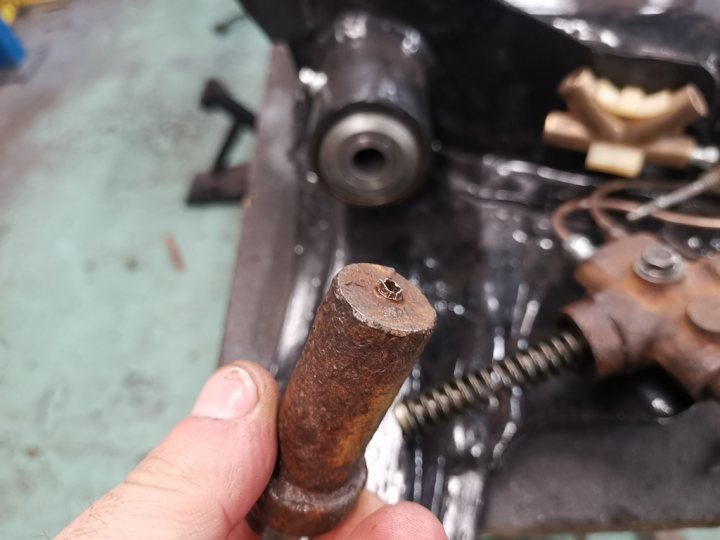 Now, it's all manky and rusty because the wicked Welsh climate has had its wicked way with it over the past three decades, but as you can see, there is a hole in the top. That isn't actually meant to be a hole, it's meant to be a spigot. There is still a hosetail for this spigot, but sadly it's lodged in the end of a very old and brittle rubber hose. Balls. The purpose of the hose is a return to the reservoir. Anything the safety valve deems unneccessary goes back to the tank (or onto your driveway, if you've got a leaky hose). Citroens have long utilised this design, which CX, GS and even DS models employing a near-identical component, but during the time of the BX's reign, some clever dick suggested they used a strong type of plastic for the cap instead, as that wouldn't rust. And, they were right; they didn't. But, the plastic looks wrong for an early BX, and being the anal sort that I am, I decided I wanted to keep it looking OE. I put a call to arms out in the Citroen community, but I didn't have much patience (not that any offers came back anyway). Loath to fit one of my plastic spares, I set about repairing the old one. That's the whole ethos of this car - repair and reuse, not replace. I want it as original as possible. To put this into effect, I went routing around in some old boxes, and found this old hosetail, pictured on the left: 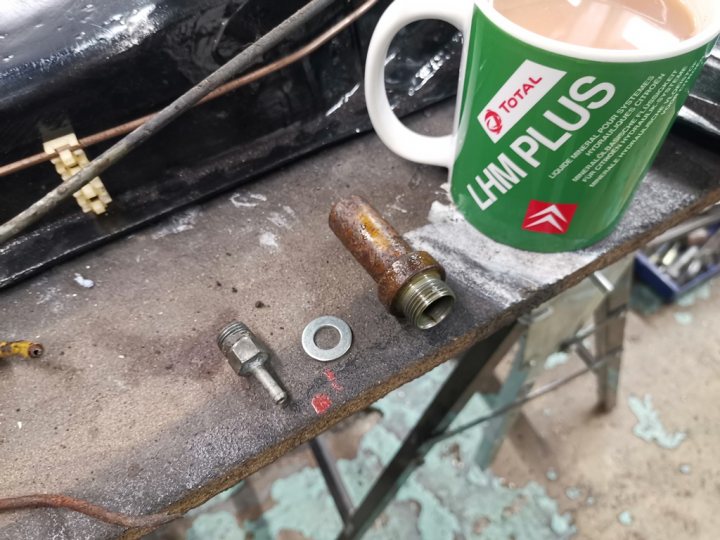 The cup of tea isn't relevant, that was just...I was thirsty. The washer is relevant, though. The metal cap had rusted and lost a lot of weight at the end. The sides were a bit pitted, but still plenty tough enough. The end, though? I wasn't totally confident the spring wouldn't just pierce through the end! That's where the washer came in. I drilled out the rusted remains of the original spigot, so that the replacement would fit through the hole snugly... 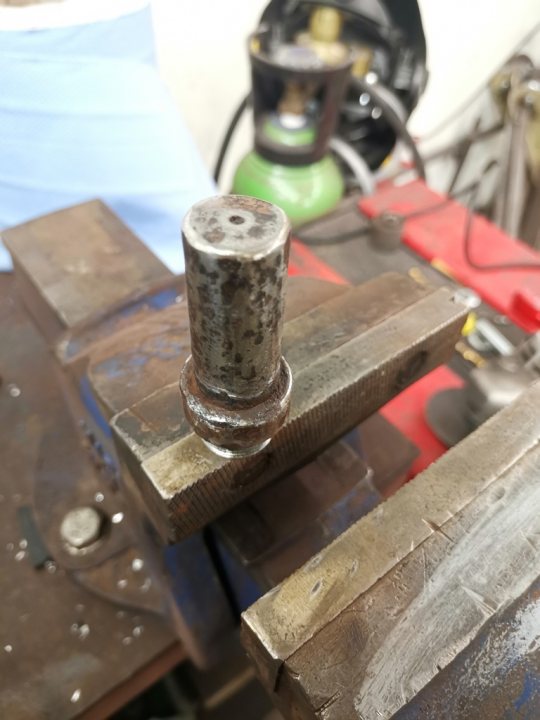
Then I cut down the hose tail until it was almost just a pipe! I left a bit on the end to locate in the hole in the cap:
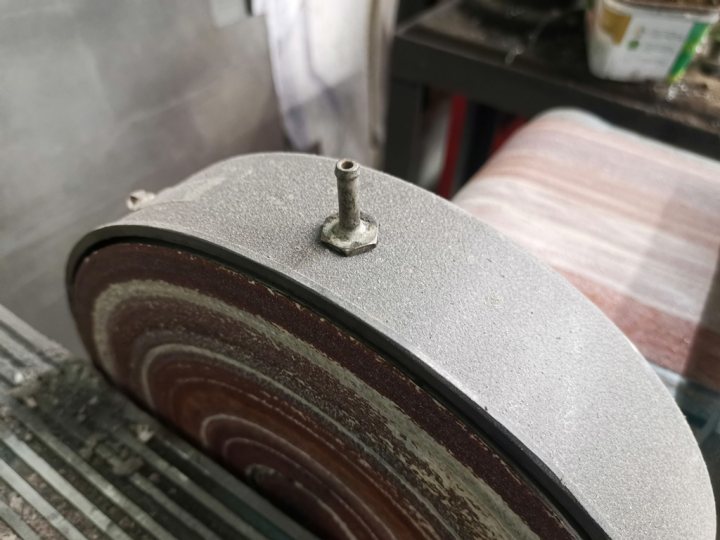
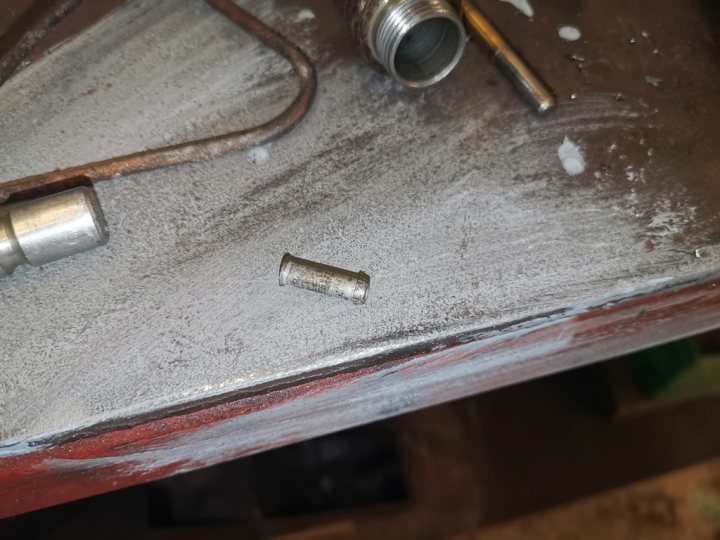
Then, I pushed it through the hole from the bottom, and clamped the new spigot in place:
[a href="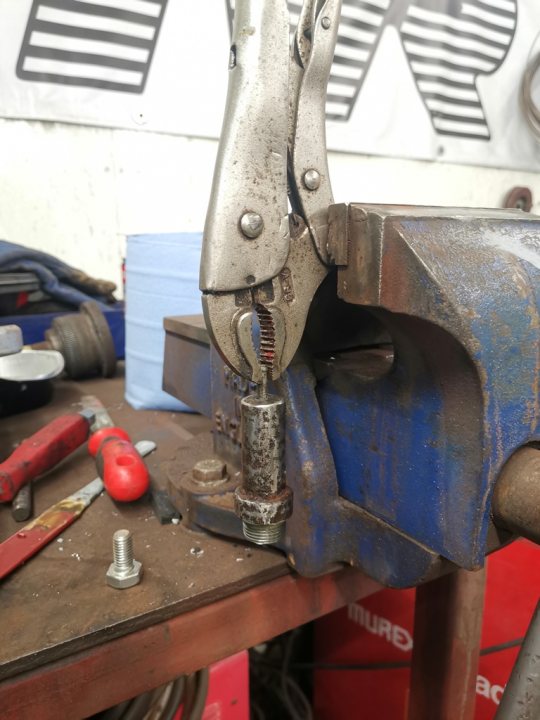 |https://thumbsnap.com/rcKFfRHT"] |https://thumbsnap.com/rcKFfRHT"] |https://thumbsnap.com/rcKFfRHT |https://thumbsnap.com/rcKFfRHT[/a] A quick tack-weld later: 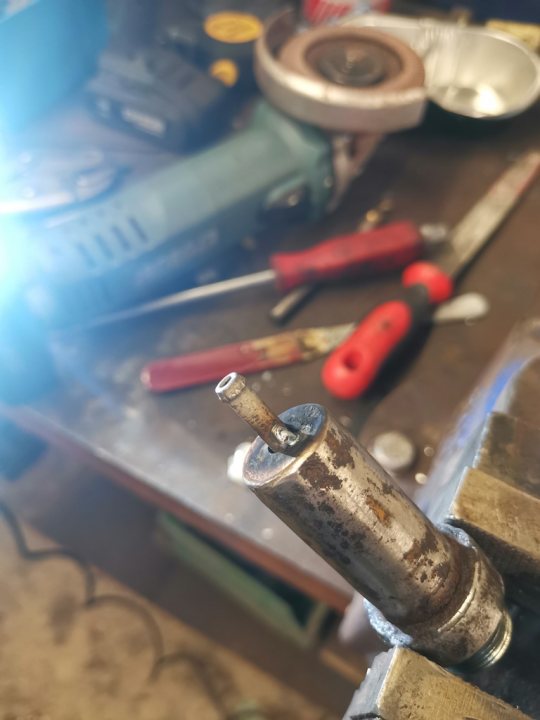
Then the washer came into play, to give it some strength back:
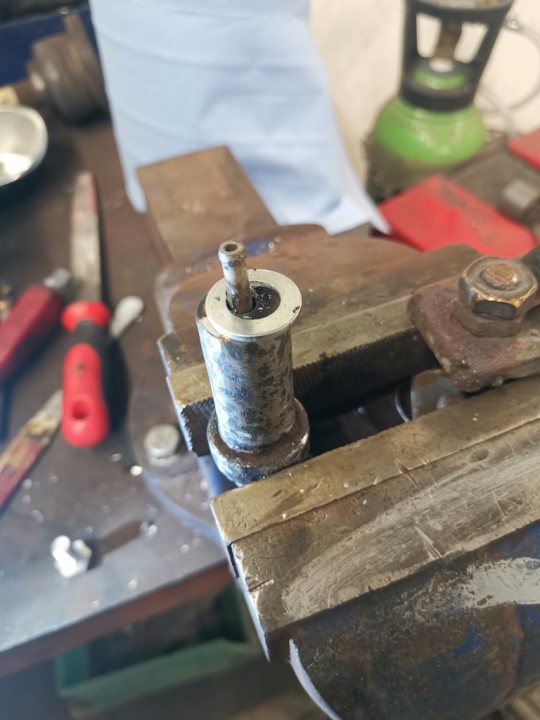
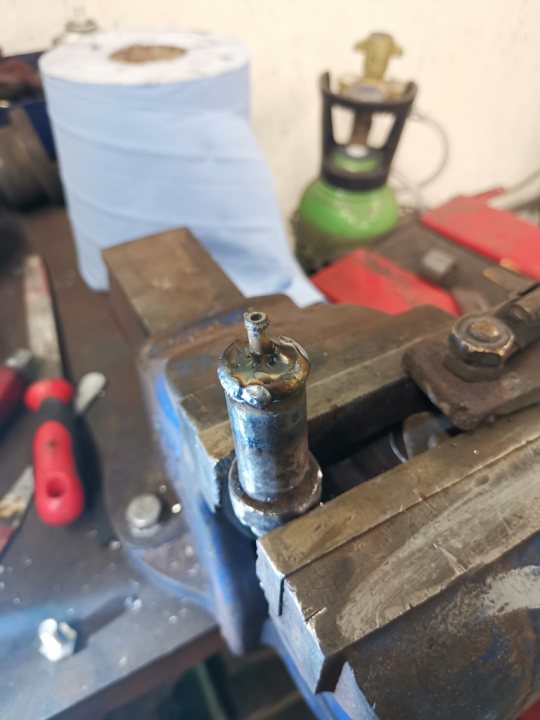
Seems like a lot of work for such a small component on an old car, doesn't it?!
Anyway, some primer later...:
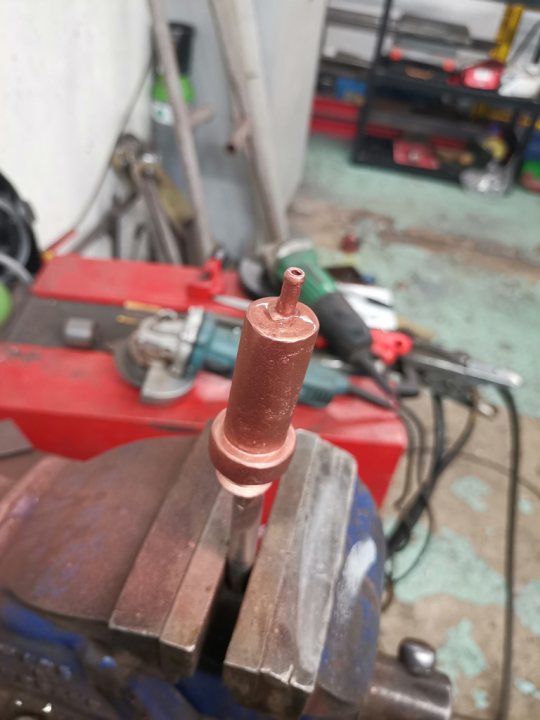
And it was ready for many coats of not-quite-Citroen's-original-LHM-green-but-something-close-to-it-from-the-RAL-chart:
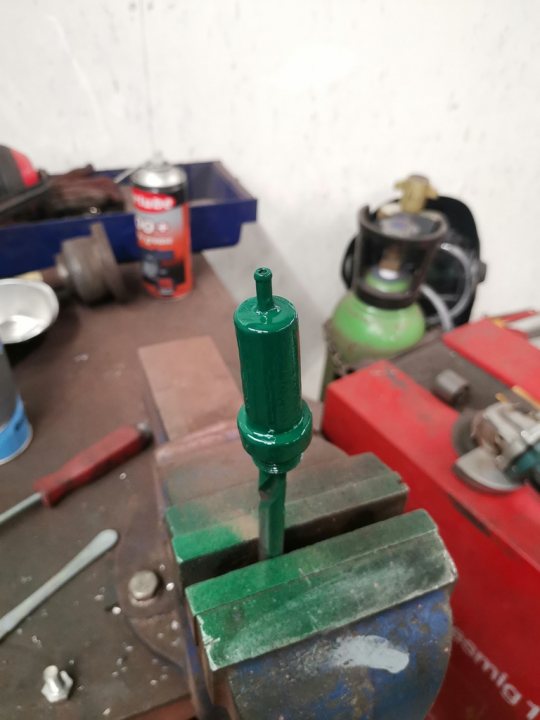
With the security valve reassembled and painted, I realised there weere other items that needed attention. I've also just realised that I've lost some pictures, so cannot document the new 'hardy' disc (rubber coupling between steering column and rack) that I fitted, or the cleaned up height-corrector, or the cleaned up steering rack....there's loads.
Anyway, in this image, you can see the old rack boots had been removed, the racks cleaned and greased, and the new hardy disc just visible near the top. The old one had totally split!
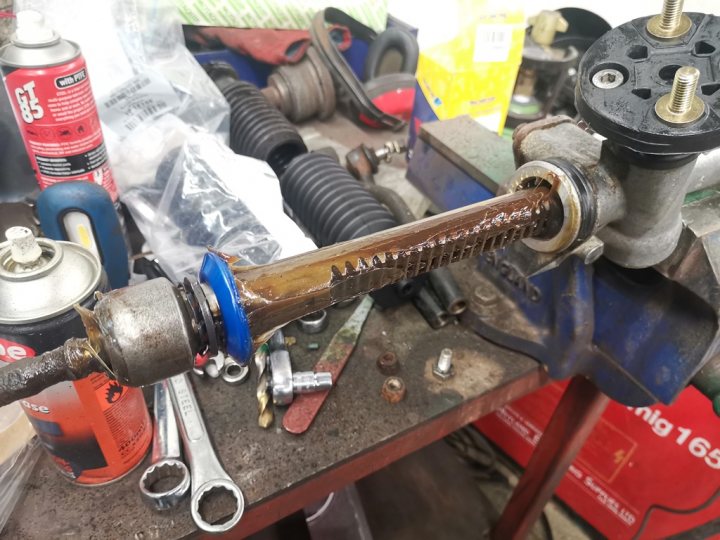
And in the meantime, I'd received new OMGcarpartsindapostgoodness from Autodoc, which is always a nice thing. It's the closest thing we have to the memories of unwrapping gifts at Christmas time as an excited child.
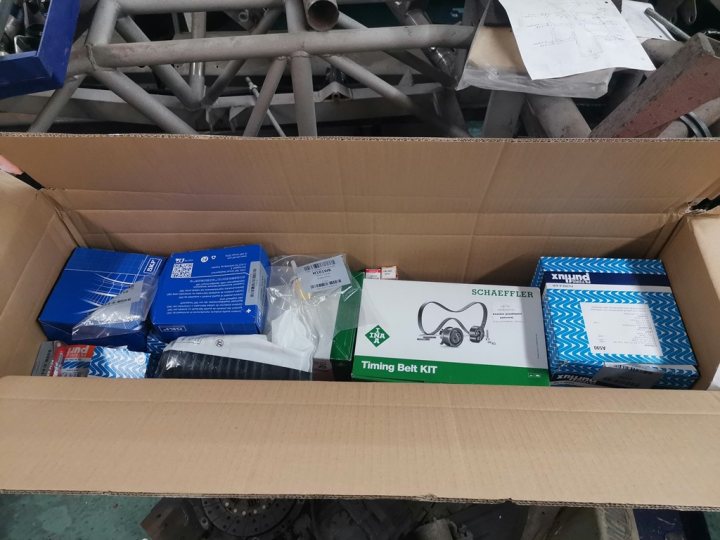
The new steering rack boots were contained within, along with a sum total of parts amounting to 180% more than I'd paid for the car.
This included:
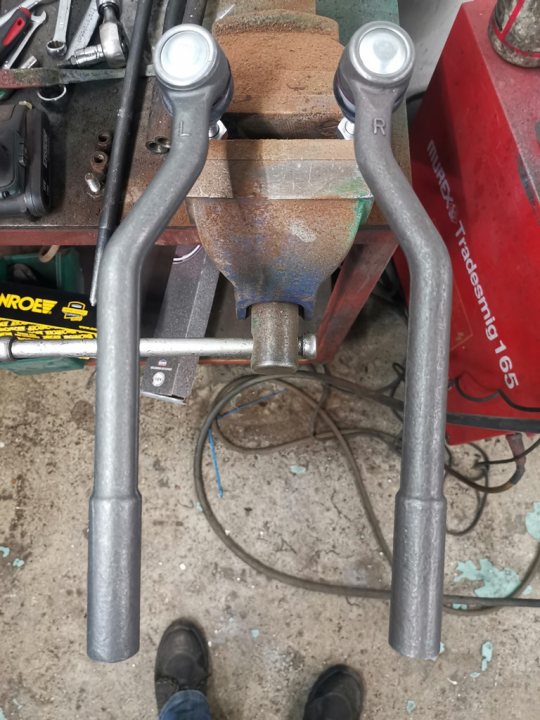
Track rod ends! My intentions had always been to hunt out the OEM options for any spare parts for this car, and Autodoc is a great site to do that on. Luckily, my BX is a great car to do that on, too, as the majority of it is as it left the line at Rennes! This means I know, for example, that the OEM for the steering rack boots was Continental.
Now, the track rod ends weren't yielding any clues, and they may well not have been original anyway, but I put my old partsman hat back on, and went for the best available brand I could. In this case, it was Monroe (or, what purported to be Monroe - you never know these days, like with Pagid or TRW). Given the options (and given that I discovered that First Line's supplier is the same as Sasic - I avoided those!), Monroe was the best of a bad bunch.
I had a phone call from a German fellow a day later, asking "Vot iz diz peace of sheet you arrgh buying diz part vor?" Not really, he didn't.
He said that there was only one Monroe part in stock, and that the opposite side would have to be a different brand. I took a punt on an 'ABS' item, and got a partial refund. When they arrived, I was elated to discover that they were, in fact, the same part! Happy days!
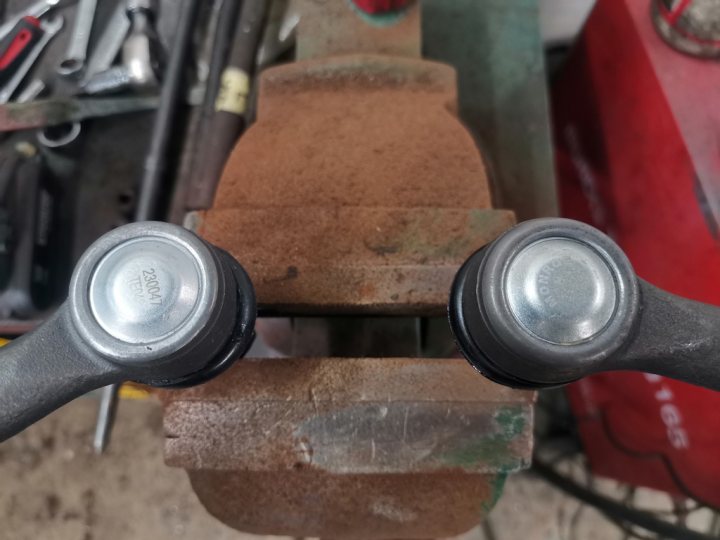
These were duly painted in my magic gloss black stuff that I paint pretty much anything I come into contact with:
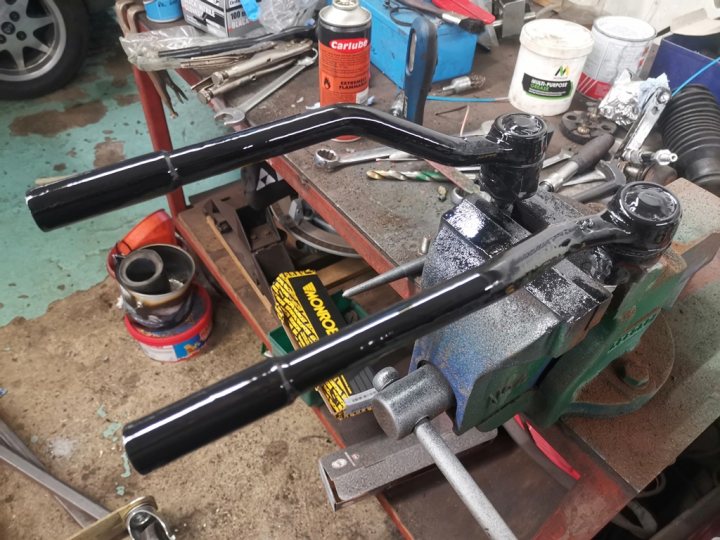
And eventually, all my work on this curse word subframe culminated in something I could actually use!
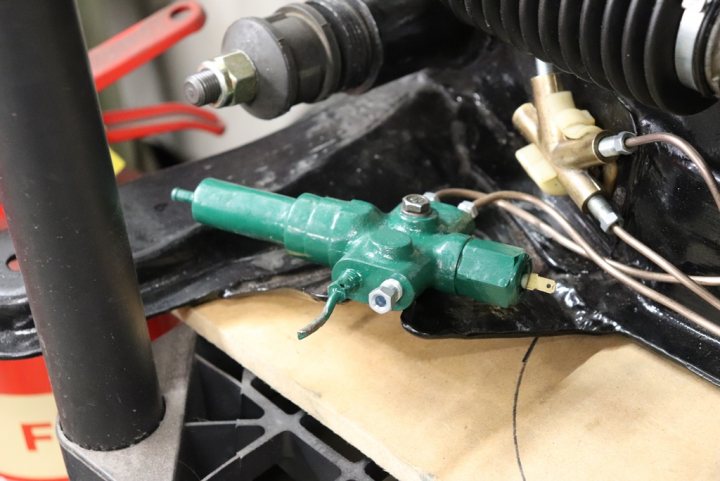
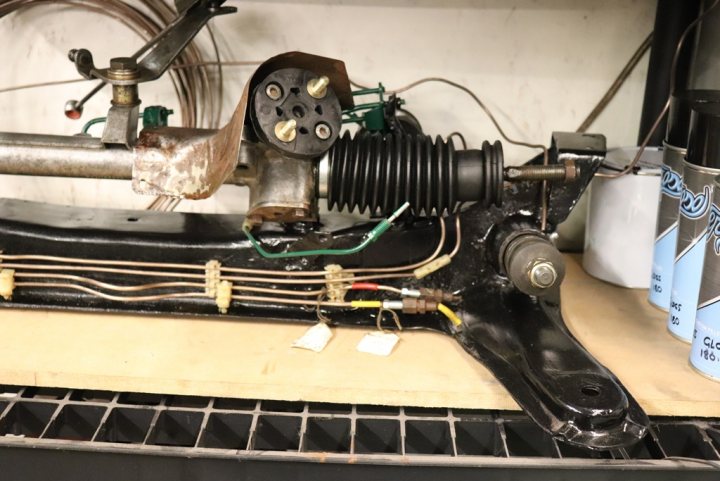
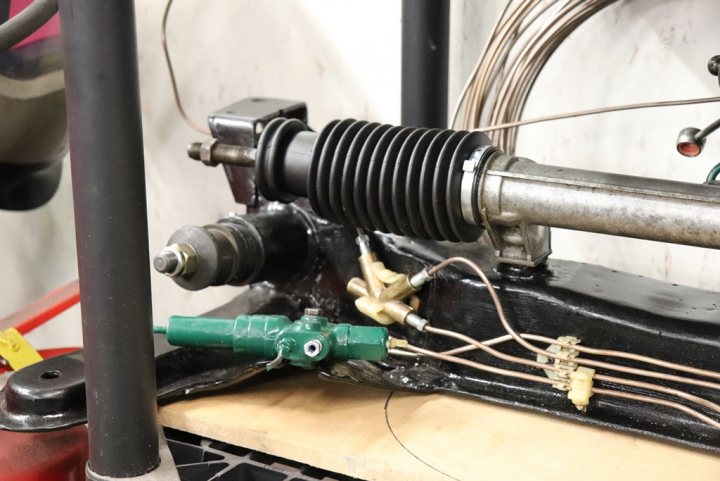
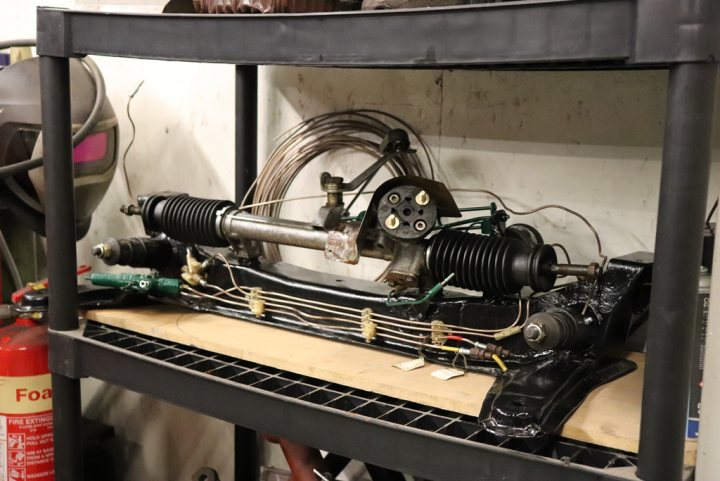
It's not finalised or perfected, but it's ready to go back on the car. Which is nice, because I haven't actually touched the car for about 3 years. Next job, dig it out from its pit! |
| |
|
|
kitch
Part of things
  Counting his chickens
Counting his chickens
Posts: 157 
|
|
|
|
Ooh, an E reg BX being broken for spares, colour me interested! That is, if there's anything left once you've picked it clean of bits you need, of course, and you don't mind me being cheeky by asking. Yeah no problem, let me know what you need. |
| |
|
|
vulgalour
Club Retro Rides Member
Posts: 7,287
Club RR Member Number: 146
|
|
|
|
|
Mostly interior trim bits in grey, I can PM a more specific list if you prefer, it's all odd bits and bobs.
|
| |
|
|
kitch
Part of things
  Counting his chickens
Counting his chickens
Posts: 157 
|
|
|
|
Mostly interior trim bits in grey, I can PM a more specific list if you prefer, it's all odd bits and bobs. That's the first problem - interior is black in a DTR! |
| |
|
|
|
|
vulgalour
Club Retro Rides Member
Posts: 7,287
Club RR Member Number: 146
|
|
|
|
|
Well, bum. That rules most of what I'm after out. I am still looking for these bits:
- Small front bumper end caps, the bit that goes between bumper and wheel arch. (looks like these are missing on your spares car so I'm probably out of luck on this one)
- Passenger side front bumper trim strip, the bit that goes between bumper and light/wing (I'll take a left and right set if they're in reasonable shape)
- Rear seat parcel shelf clip, the bit that the parcel shelf bar pushes into, a pair preferred if possible.
- Boot interior side panel domed plastic trim clips
- a less scruffy gearknob
- Front washer spray tube
- Black tailgate release button (pretty sure this is the same between estate and hatch)
|
| |
Last Edit: Jan 9, 2020 11:03:19 GMT by vulgalour
|
|
kitch
Part of things
  Counting his chickens
Counting his chickens
Posts: 157 
|
|
|
|
Well, bum. That rules most of what I'm after out. I am still looking for these bits: - Small front bumper end caps, the bit that goes between bumper and wheel arch. (looks like these are missing on your spares car so I'm probably out of luck on this one) - Passenger side front bumper trim strip, the bit that goes between bumper and light/wing (I'll take a left and right set if they're in reasonable shape) - Rear seat parcel shelf clip, the bit that the parcel shelf bar pushes into, a pair preferred if possible. - Boot interior side panel domed plastic trim clips - a less scruffy gearknob - Front washer spray tube - Black tailgate release button (pretty sure this is the same between estate and hatch) I'm so sorry, I missed this one! Do you still need these parts? |
| |
|
|
kitch
Part of things
  Counting his chickens
Counting his chickens
Posts: 157 
|
|
|
|
Admittedly, I'm a very long behind with this thread, so shall do my best to bring things up to speed before I go home, as I'm waiting for some paint to go off! So, up to now, I have a painted, rebuilt subframe sat waiting for me on a shelf. Having spent hours farting around painting track rod ends, it dawned on me that readying some wishbones might prove a sensible use of time, being that they effectively connect the front wheels to the car. Here's a wishbone: 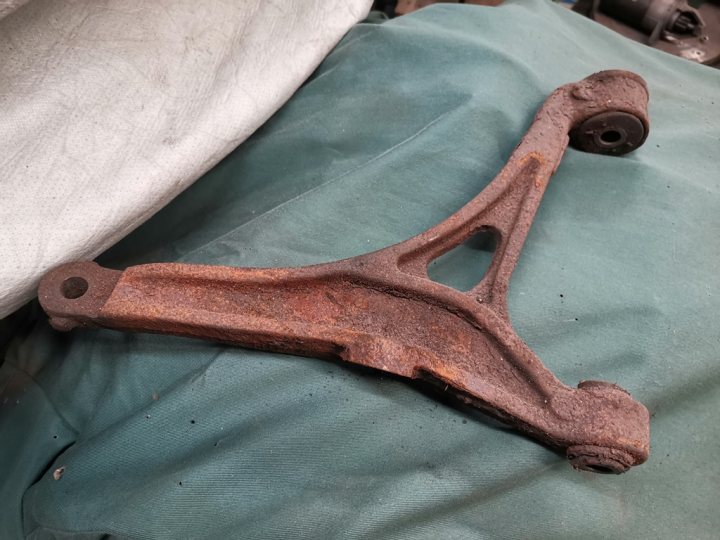 Those who've been paying attention (and I wouldn't blame you for not doing so) will recall that this is a very early bearing subframe-car...I may have mentioned that once or twice before. Being such means that unlike a normal BX, you cannot follow standard protocol, i.e: *Pop into Euro Car Parts. *Be looked at blankly when trying to explain what a Citroen BX is. *Then be looked at blankly while you try to explain what a wishbone is. *Give up, go home and find some complete wishbones on eBay for next to nothing. *Smash forehead with a rusted suspension sphere when you clock the invoice has come from 'Euro Car Parts Ltd'. Instead, you don't bother going to Euro Car Parts, or even somewhere competent. You don't bother, because you know they will not have said wishbones, complete with bushes. The only option, is to fit new bushes to the old wishbones, because these bushes are suitable for cars with a bearing subframe (which I may, or may not have mentioned that I have, and is rare, and cool). As fortune would have it, SKF knew what kind of woes would present themselves to me at this juncture, and had to forethought to include a new set of bushes in the bearing kits that I fitted in the subframes. I think that's fantastic customer service, personally. More companies should look into the future, and predict curse word that hasn't happened yet. So, I had bushes, and I had wishbones. However, the existing bushes in the wishbones had been in there since 30th November 1983, and the bulk of that time was spent in Swansea. If I were a bush in Swansea, I'd be anchoring myself in there pretty tight. 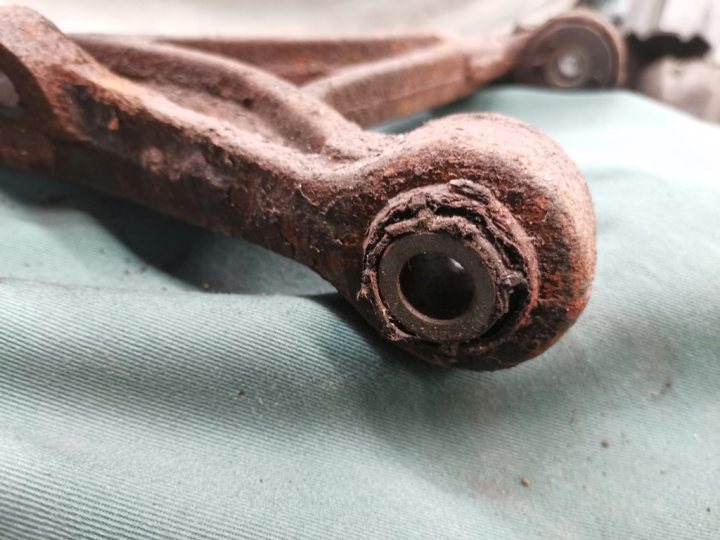 Not looking clever, is it? That's got headache written all over it. Luckily, I have a 30tonne press at my disposal, but left to its own devices it would have no issue in snapping a flimsy BX wishbone in half. For that reason, and because I knew I'd be exterting more than a couple of grunts, I rigged up some bracing to support the wishbone enough to really lean on it. 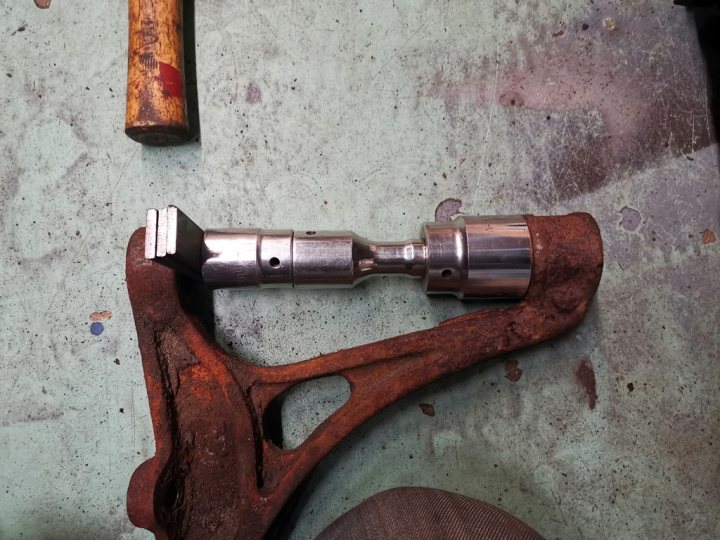  (The picture in the press is the side that didn't need the bracing, but I took a picture of the wrong piece of action. Bite me! I'm no pro....) Fully expecting to have to exert all of the available 30tonnes, I prepared myself for the shock and subsequent BANG that would follow when either the bush gave way, or something old, rare and unobtainable broke by adopting the face Rowan Atkinson did in the episode of Mr Bean where he accidentally anesthetised his dentist (played by Richard Wilson, who didn't believe it) and had to perform his own filling. The bit where he's drilling: that face. My efforts to bring spare underwear to work, however, proved...well, pointless. Because, much to my amazement, there was no BANG; nor shock, or shudder: 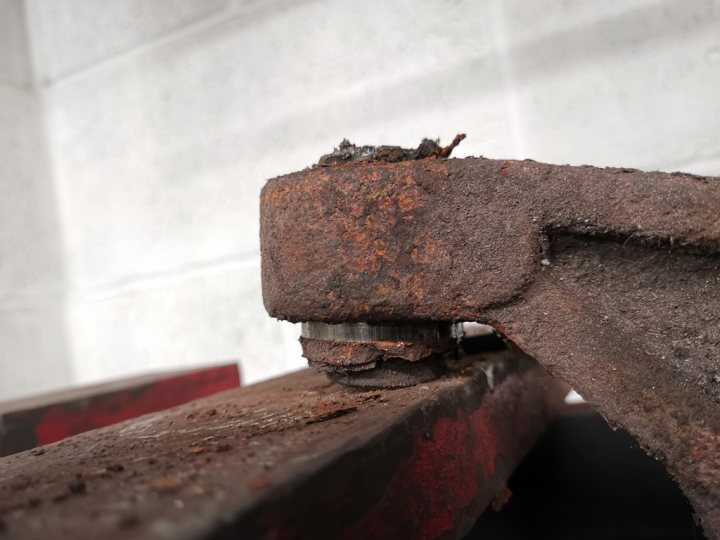 It just pushed out. All of them did. It was dead easy, true, but do you like how I injected some jeopardy there? How I captivated you? How I made it all 'edge of the seat' reading? Because that's how they do TV, that is. It must be amazing to watch me at work here! You're all very lucky. So, having wasted many, many words basically conveying that I've removed four wishbone bushes from a pair of wishbones, I prepped, painted and re-bushed them. In the process of doing this, I completely forgot to take any pictures, but use your imaginations. They ended up all black, and shiney. They were refitted to the subframe, which was now ready to be reattached to the car.... 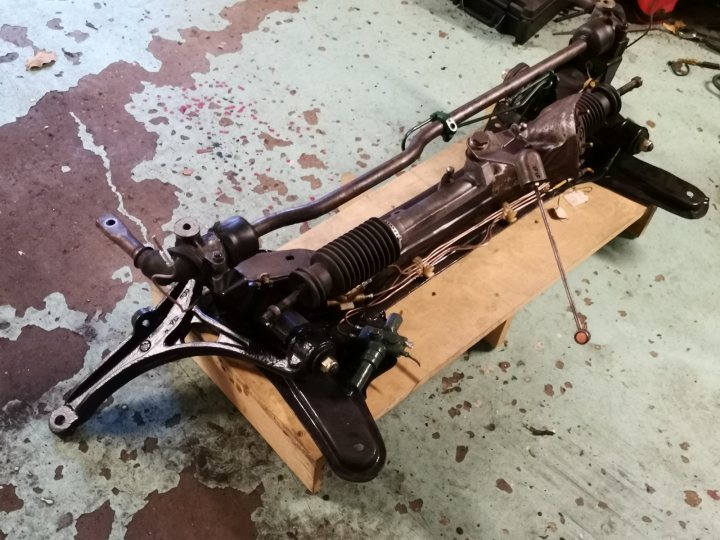 ...which was immobilised, perched on four axle stands on the other side of the workshop, having resided there for at least some years... 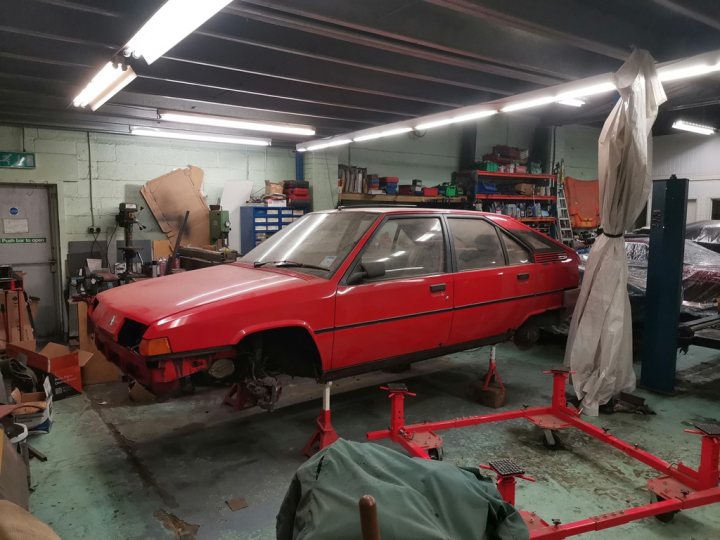 I placed it on that trolley thing, and wheeled it over to the two-post ramp. It all went very easily, with no further jeopardy, or drama. I definitely didn't have to remove the limit-stop switch on the four-post ramp to allow it to raise about 1cm higher so that it would clear the aerial, and I certainly didn't have to do that because I steadfastly refused to remove the aerial as that would involve disturbing the original fixings that house the interior light, because it's so original and all the other boring stuff I harp on about. (The fact that it doesn't even have a radio is a somewhat ironic addition to the tale) Anyway, ramp reached a [-]few hours[/-] short while later, I was ready to move on to phase two. 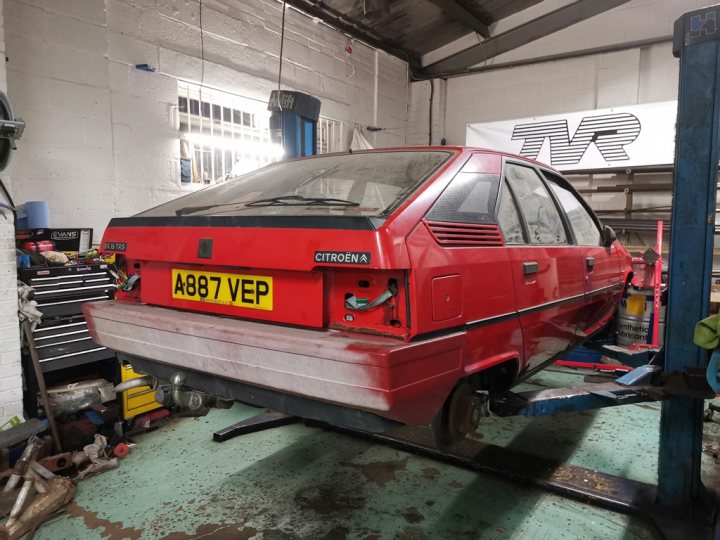 ...which I will have to add later, as once again I've waffled and run out of time. |
| |
|
|
vulgalour
Club Retro Rides Member
Posts: 7,287
Club RR Member Number: 146
|
|
Feb 28, 2020 10:23:15 GMT
|
|
I'll send you a PM regarding those bits and bobs, I managed to acquire most of them, but am still after some other bits you might be able to help with.
Jealous of that lovely subframe too, nice work.
|
| |
|
|
|
|
|
Feb 28, 2020 11:19:50 GMT
|
This thread is fun, if sporadic.  Bookmarked! |
| |
|
|
|
|
|
|
|
I had a BX 17RD in 1990 when I was 17 & put an extra notch in the ride height adjust lever between fully low & normal ride height ( instant lowering)👍 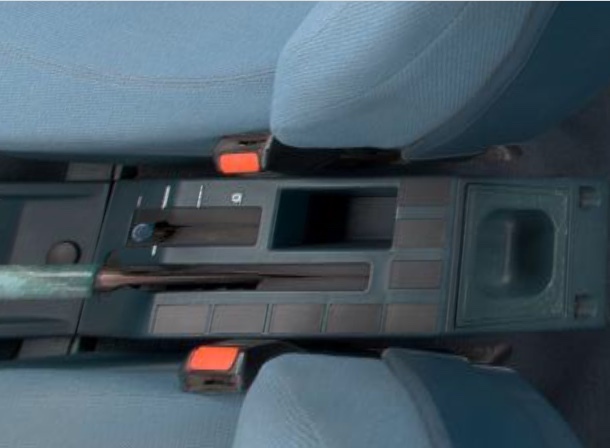 , |
| |
|
|
kitch
Part of things
  Counting his chickens
Counting his chickens
Posts: 157 
|
|
Jun 18, 2020 19:55:05 GMT
|
This thread has turned into a fairly accurate representation of myself! It promises much, delivers little, and never at the times it says it will. It's almost like it's disorganised chaos! No! That can't be right, can it? Well, it's certainly an odd time we all find ourselves in, so I'll cut myself some slack. There have been comings and goings in my car world, but the 16TRS is still here, and still plodding along. Well, it's not plodded for a couple of months now, but prior to COVID, it was! I'm still some way behind, so I'll try to get up to speed as briskly as I can. Writing stuff like this seems a bit self-indulgent, but for me it's an excellent way of keeping a diary of what I've spent my life doing, because I sure as hell won't remember! OK, so we're at the point where I've rebuilt the front subframe of the BX (rather than replacing it, because I didn't want to lose Le Bearings). I've also now renewed the cambelt, tensioners/idlers and water pump, along with the spark plugs, the engine oil & filter, and the air filter. The rebuilt carburettor has been refitted, but the body is still largely as-was, so before the subframe goes back in and makes access to certain areas much more difficult than it needs to be, I need to sort out some of the scabs. 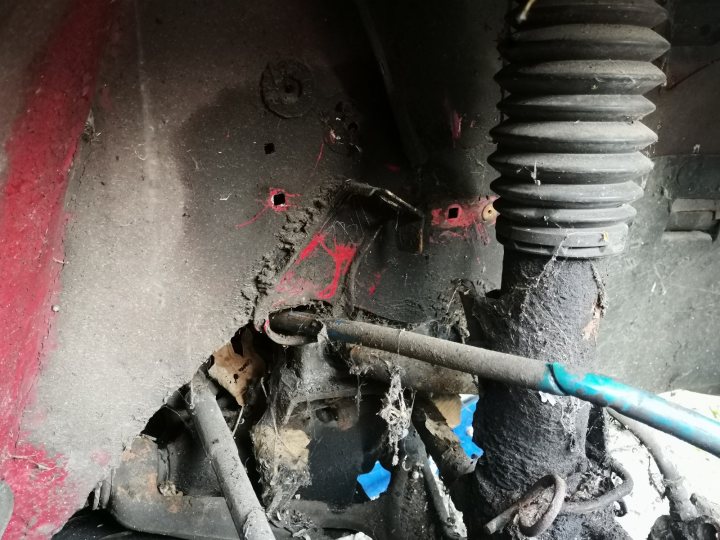 "What scabs?!" You might ask. Well, that's not the front wheelarch of this car (above, look up!); It's the arch of the donor estate which will so valiantly give its life for the cause. See the bracket, with the pipe posted through it? That's actually the handbrake cable. You idiot! You thought that was a pipe! Anyway, that bracket is indeed the guide for the handbrake cable, which in the case of a hydraulically-suspended Cit, operates the front wheels, because reasons. (There are actually sound logical reasons for this design, but saying 'because reasons' is it a bit of a thing, these days). In the top of the bracket, mounts the brake flexi pipe, which is absent in the image above as I've uncerimoniously removed said hose with a large pair of bolt cutters. Decades of sitting around in Swansea doing sweet FA for most of its existance have meant that these brackets have practically rusted away on the TRS. Being spot-welded to the body behind them, the outer skin of that has also rusted away behind them, natch: 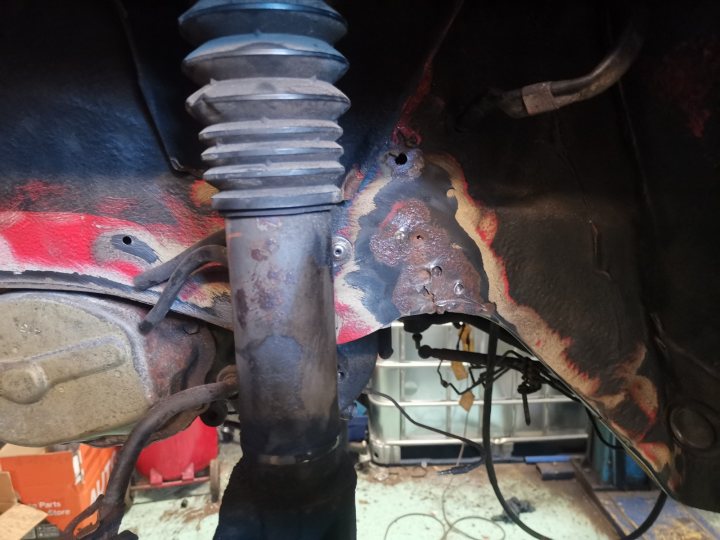 Some tickling with the grinder later reveals that - thankfully - the chassis rail behind it is fine: 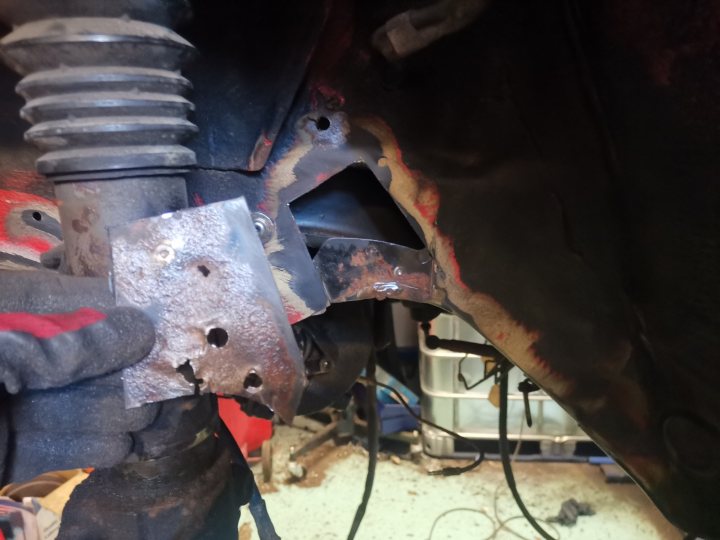 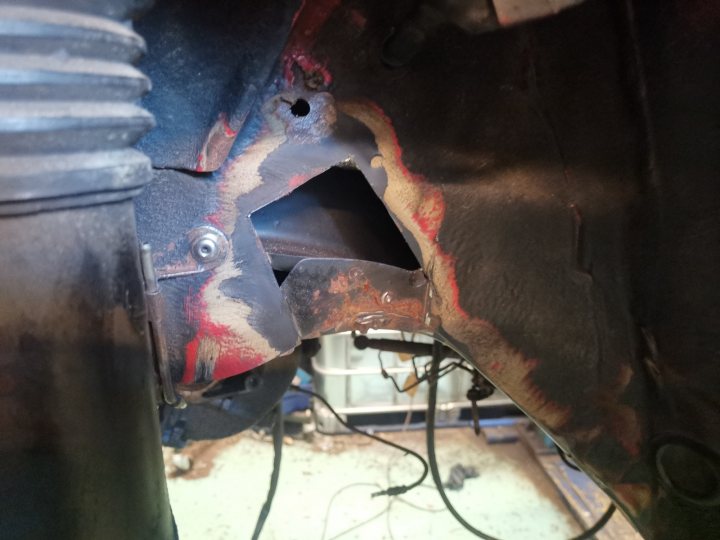 So, bracket in place: 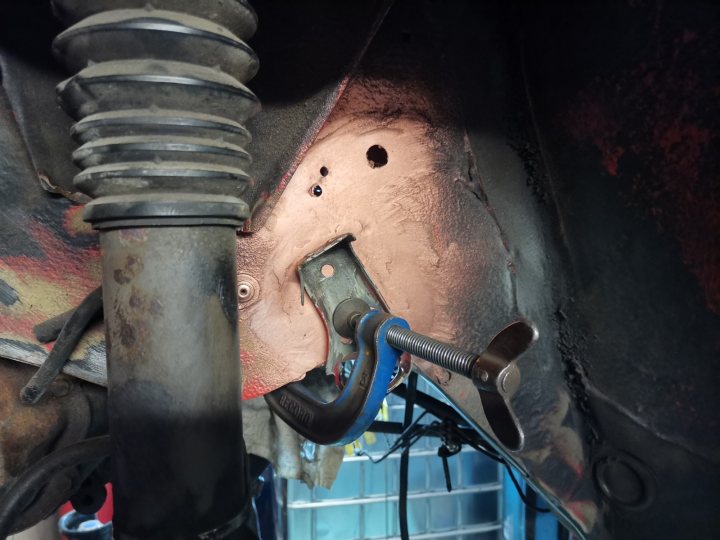 And then welded in along with a section underneath to beef the inner rail up, followed by some paint: 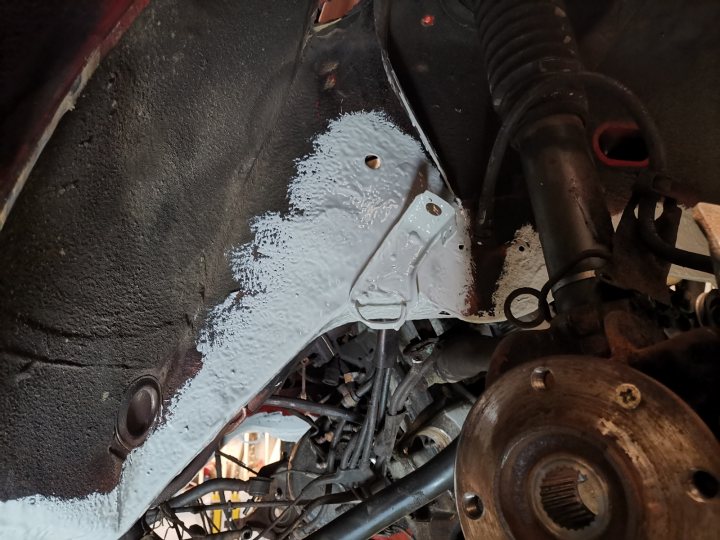 Same carried out on the other side, and then I overcoated everything with a splash of the original Rouge Valleunga (Sunrise red). The subframe can now go back on, and I can crack on with connecting all the suspension and brakes. 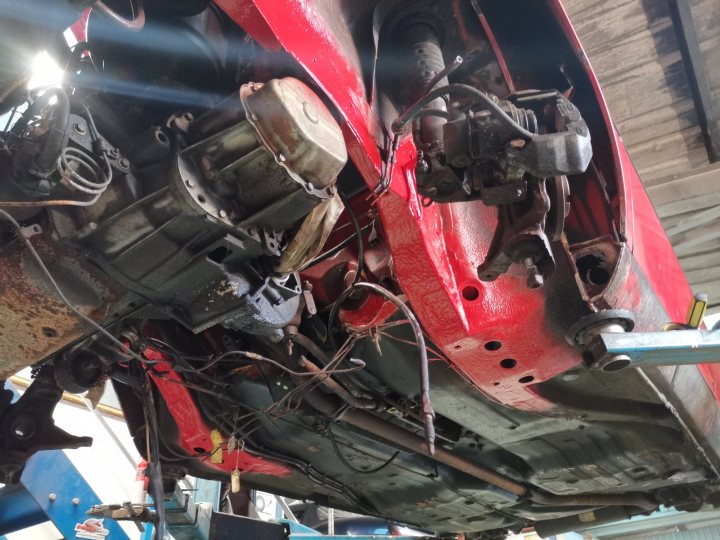 At this point, of course, I've never seen the car raise itself. When I got it, it was a leaky mess, and all it's done since is sit around. Strictly speaking, I've only driven it 20metres at most, and that's with no brakes or suspension! All I can really do is attempt to put the car back together, and hope that there are no hidden hydraulic issues buried underneath! Anyway, it was finally ready to re-install the overhauled subframe. 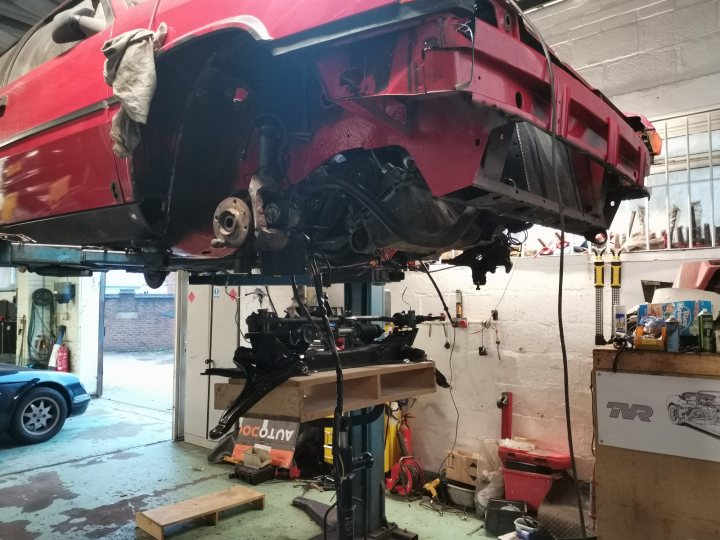 Once that was fitted, it was time to carry out the exchange of fluids and filters. (It was much less sexually gross that it sounds) 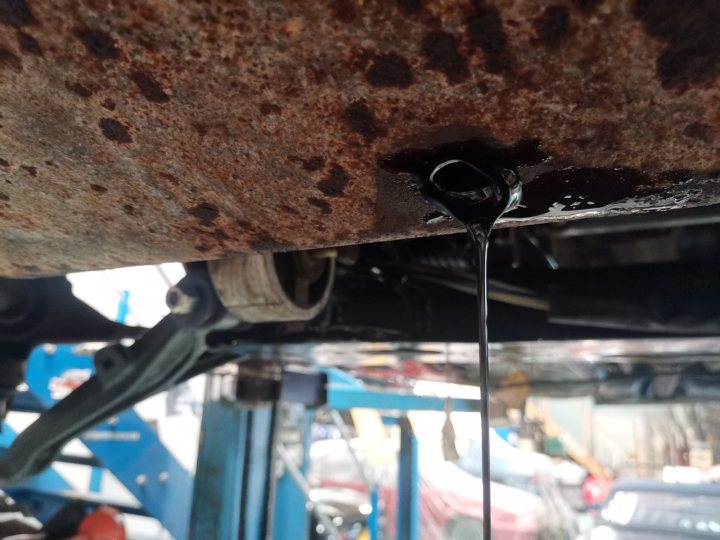  This is actually the prep fluid for Evans Waterless Coolant. I fitted that in both my 16 Valve, and the 19GT I did for my dad. These BX mk1 dashboards don't have coolant temperature gauges, only an 'oh curse word' lamp! I'd rather learn that I had a mechanical issue before the coolant had boiled away, so it's effectively just a fail safe. I also have lots of nearly 37yr old rubber hoses, and radiator, and heater matrix....everything is pretty much original (that I can tell). The waterless stuff doesn't pressurise, which means I've got less chance of a very old part letting go. That's quite important, as I have this twisted perversion to leave as much of the car as original as possible (pretty much because most BXs are now anything but, and this is a bit of a timewarp!) 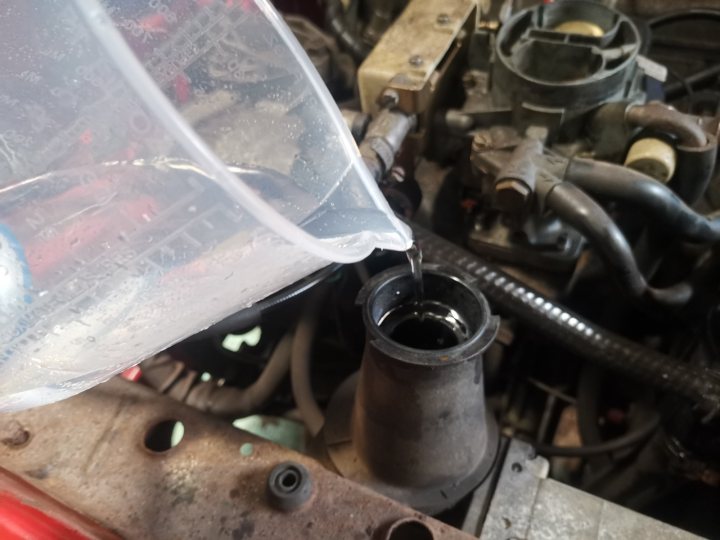 Something to purify the air... 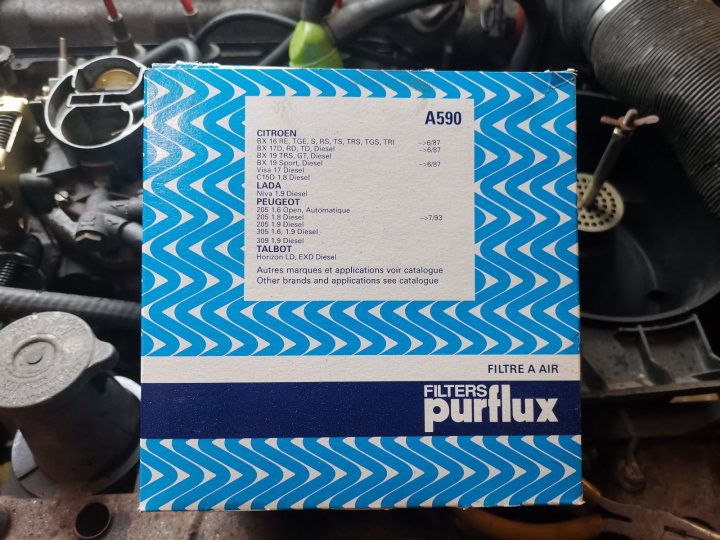 And some small boxes of sparks... 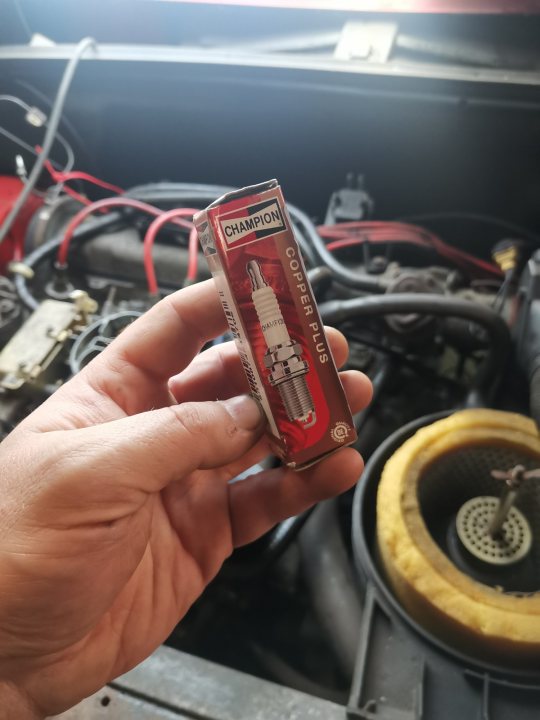 So, with the timing belt done, the subframe fastened in and all the fluids in place, I decided to hook up some electrical juice and see if it would light up. 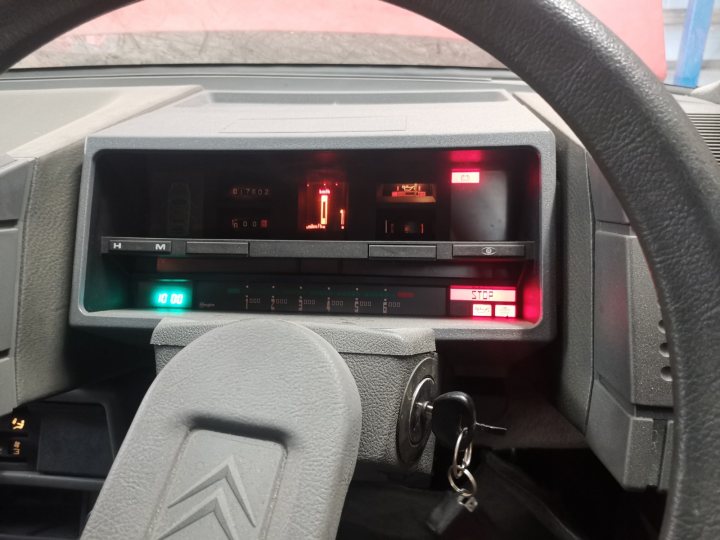 Cawse' it did! So, the next step was to attend to all the little rusted barbs of steel, otherwise known as the hydraulic pipework. On any BX, there are four 3.5mm pipes (or 3x 3.5mm & 1x 4.5mm, if it has ABS) that run from the front of the car, to the back axle. One of these is the feed to the rear suspension cylinders, via the height corrector valve which knows how much the rear cylinders need; one to the brakes (which is interrupted at the brake valve by the feed to the rear height corrector, as a mains of modulating the pressure on the brakes according to the weight in the back of the car); another line to the height corrector (as a pressure supply so it can operate), and a functional return (as opposed to a leak-off), which goes to the 'Octopus' and sees the fluid the height corrector doesn't need returned to the reservoir. 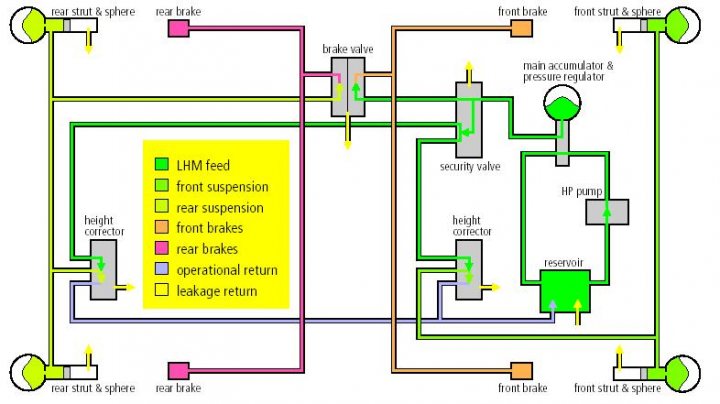 (A picture speaks a thousand words, right?) Now, on a BX, there are two approaches to the hydraulic pipework dilemma. The correct approach is to drop the rear axle, drop the fuel tank....well, drop everything, and then make new pipework, front to back. Mmmmm....involving! The alternative approach is to cut 'n shut the lines, relieving the neccessity to remove all the above.l Obviously a significant increase in speed, and a significant decrease in effort are worthy positives for this approach, but, it's often considered a bodge job, as aside from the fact it's difficult to flare pipes in-situ and prevent leaks, it's also likely that the pipework out of sight will be equally poor condition. Obviously, I've got for the bodge job. There's method to this, however. Firstly, this car has a fair amount of corrosion, sure, but it's not the corrosion most BXs would suffer. It hasn't done winters in the salt, and it hasn't done muddy puddles. As a result, though it features the earlier type of pipe (i.e. not protected with anything), the sections that run up and over the tank are in pretty good shape. Secondly, I want to disturb as little as possible on this car, and that includes not removing back axles and fuel tanks. I want it as 'factory fresh' as possible (lolz....it's anything but fresh!) So, I'm cutting & shutting. I've weighed up the options, and in this intance, I'm making that call. At the end of the day, if I've made the wrong call, I'll be rewarded with a slippery green floor in the workshop as a reward! The best way to attack this, for my money, is using these nifty little compression-type joints. Two loose olives, a central joining union, and two nuts. Means I don't need to flare the pipe, though they can be a little tricky to get a good seal on. 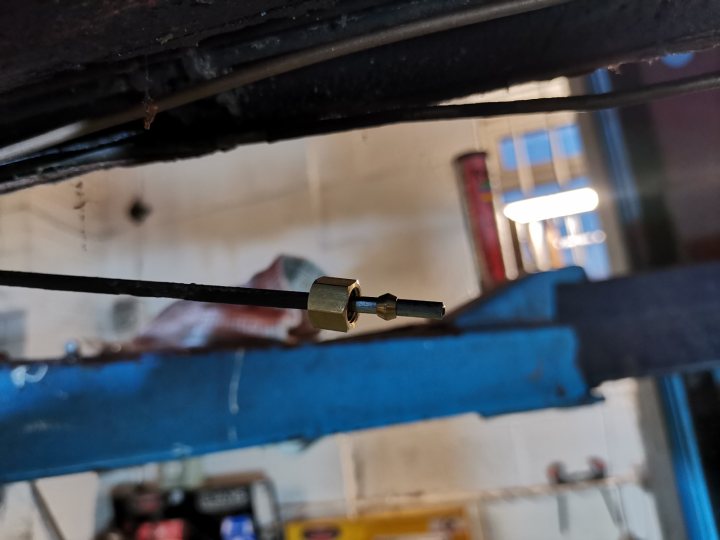 The downside? This assortment of bags cost £175: 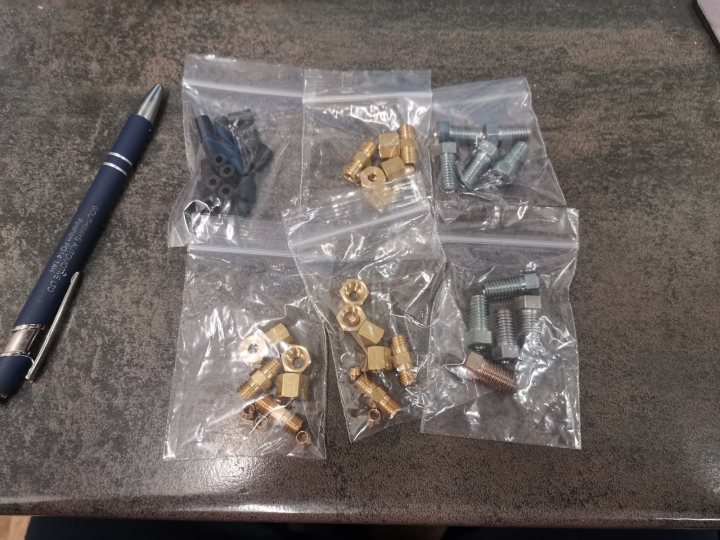 I curse word you not. That's 175% more than I paid for the car (alright Vorderman, I realise 175% of nothing is not £175 - it's for effect) But, it's a means to an end, and the pipework is done (mostly). 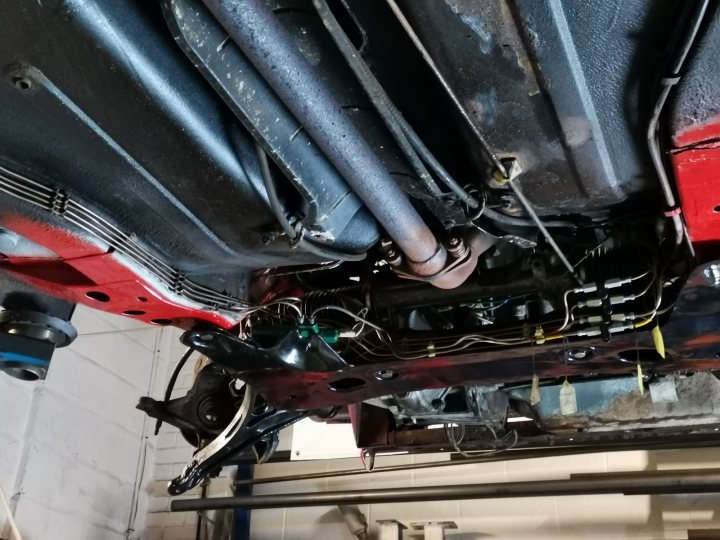 Along with the pipework, some Michelins I had knocking around have been fitted to the original BX steel wheels. 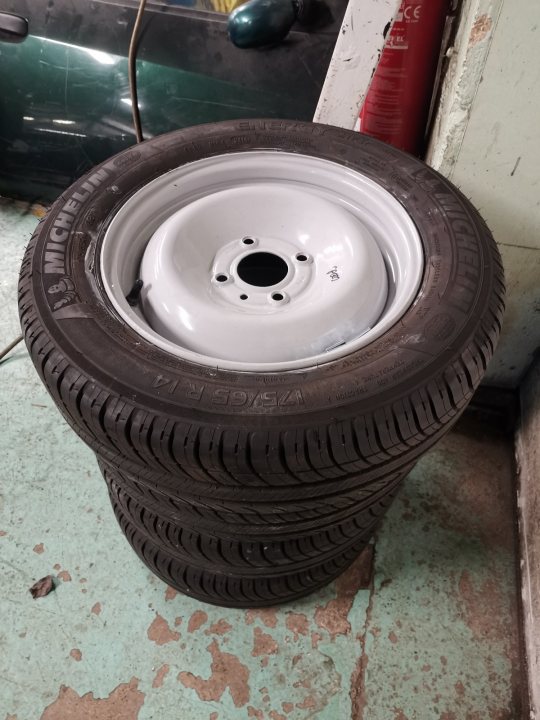 Many in the BX world have questioned my sanity, refurbing the original steelies, when so many are available as spares. As I always tell them, however: Date stamps, innit: 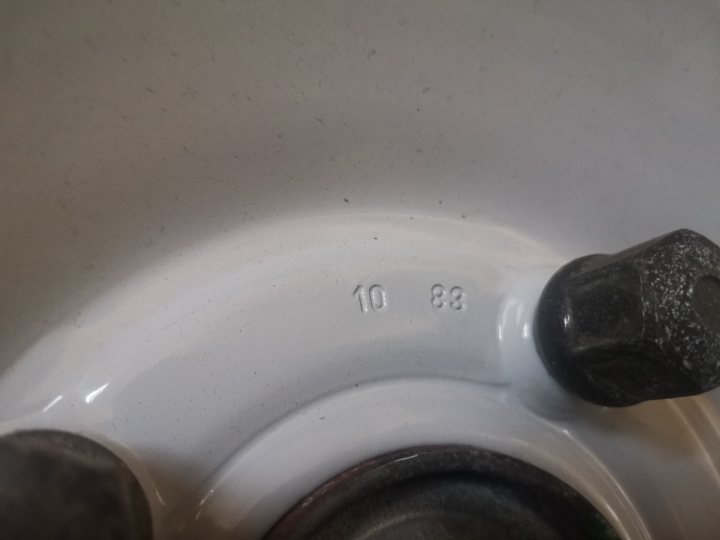 That's a rare rim! Plus, these ones were made by someone else: 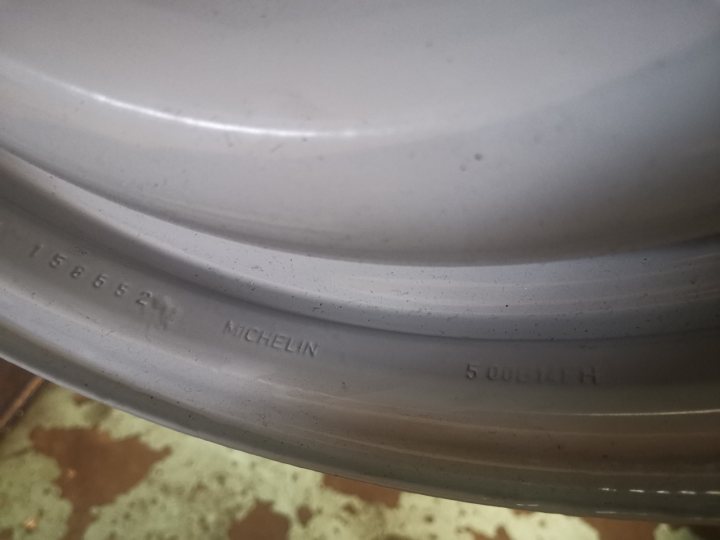 The spare rim is still holed, but I'll go back to that later. These have a light grey coating on them for now, but they'll actually be overpainted with the correct silvery-grey. I had it in mind that I wanted to get the car on its wheels, running and with working suspension, before the end of 2019. I finished 2018 by getting the GT back to my dad, so it seemed fitting that the following year should end in a similar fashion. Naturally, I couldn't wait to put the wheels back on:  The next task in getting it running and seeing if the suspension will raise, was to make the suspension work. At the moment, an exceptionally grubby LHM reservoir and a lack of LHM fluid within was preventing this, so that needed sorting. There are a number of filters inside the reservoir, all of them cleanable thankfully. There are two on the main pickup unit (which also acts as a main cap): 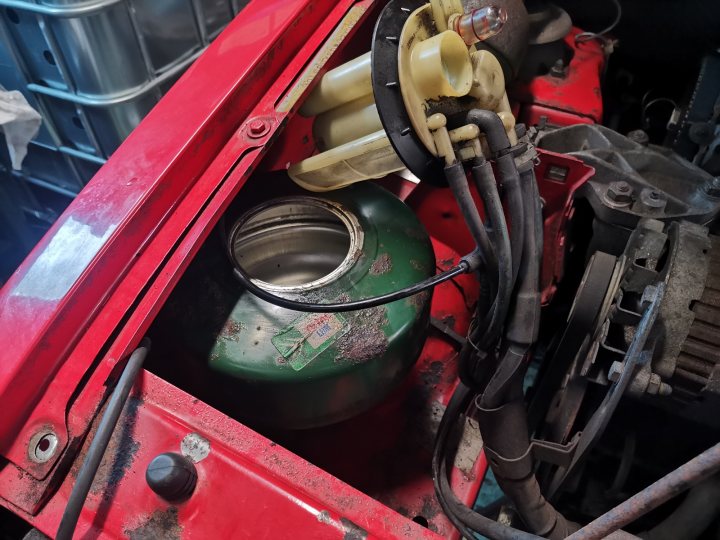 Then, if you reach inside with your hand, you'll find the moon disc. 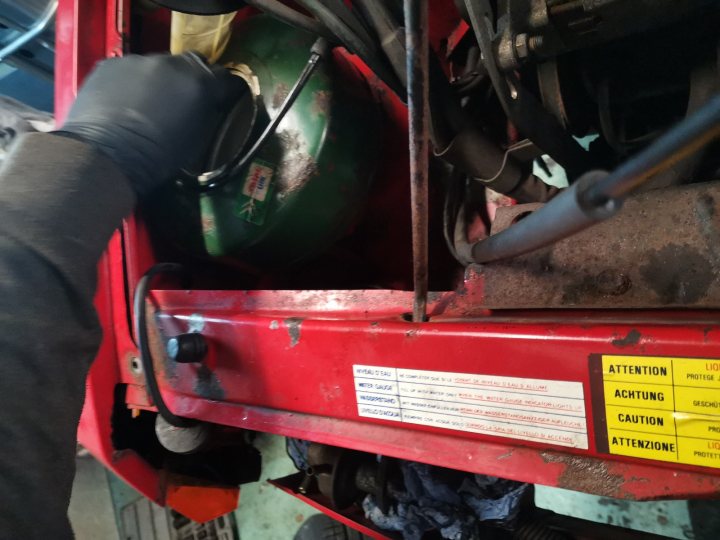 (You will cut your hands to shreds doing this. Easier to just accept it) One disc: 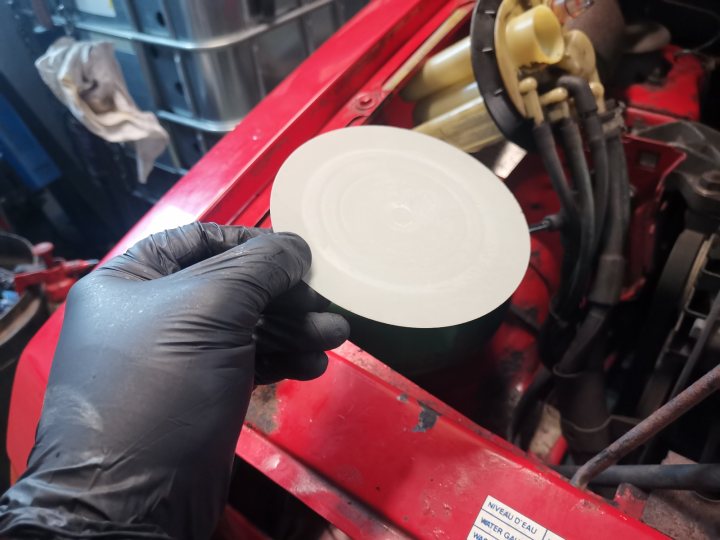 The moon disc is also a filter. It acts as a baffle which sits over the top of a 'sump' in the base of the reservoir. Thanks to gravity, any curse word in the fluid accumulates there, ready to be cleaned away, thus: 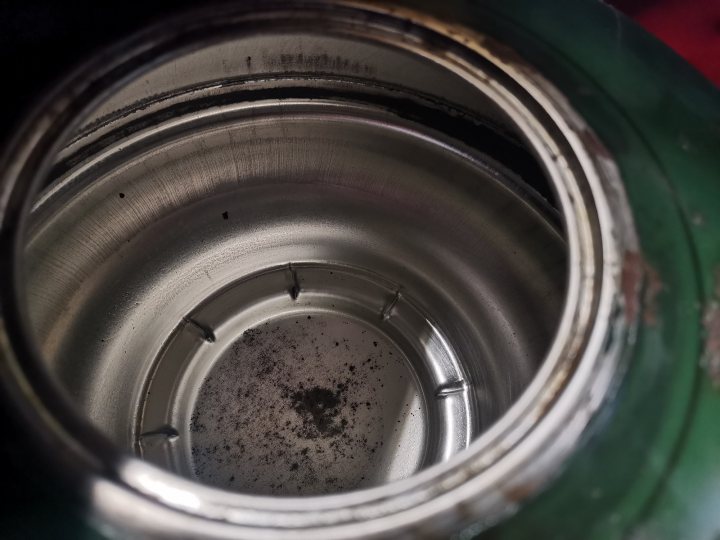 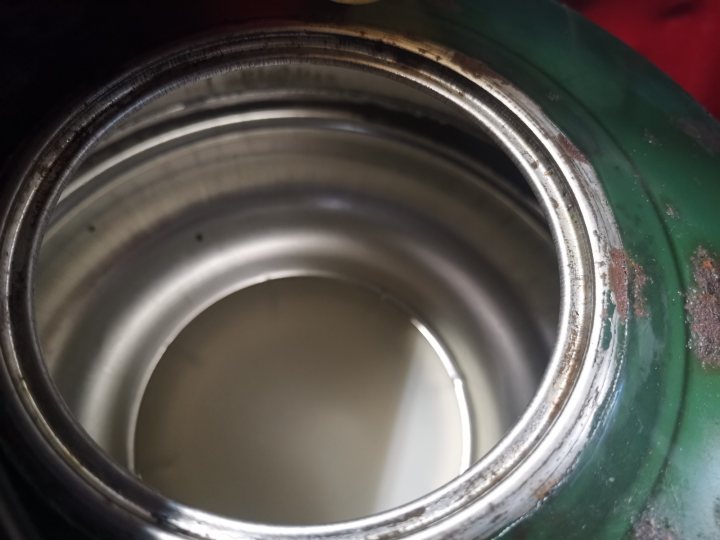 With the tank clean, I fill it full of fluid, as well as the suction hose to the pump, so it has a fighting chance of bleeding itself in. With every other connection made, and all the oils in place (except the gearbox oil, but hey...I'm not gonna drive it, right?) It was time to attempt to start the car again. 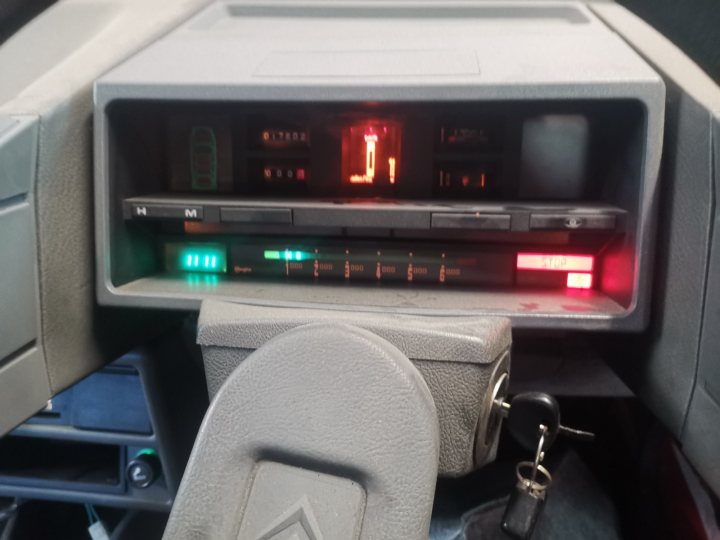 Success!! See the green light along the bottom? That's a VFD rev counter; The BX is risen! Well, not yet. That's the next bit! I've started the engine with the pressure bypass screw open on the pressure regulator. This means that the pump will continue to pump away, it's just that the system will send it right back to the reservoir again, without charging any of the circuits. Once I'm ready (aka once I've plucked up the curse word to attempt it), I need to close the valve and cycle the suspension lever. Worth remembering that last time I did this, it curse word LHM all over our trailer! On this occasion, however... 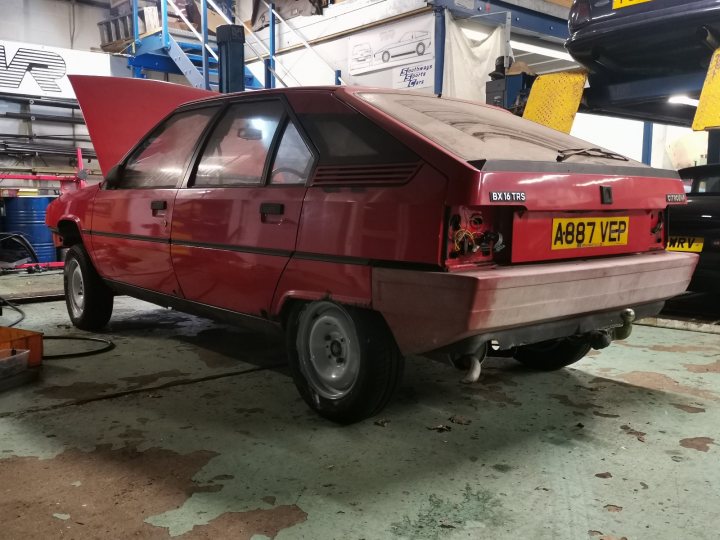 He is RISEN! (Other religous connotations are available). Before long, he (sorry, He) will also be driven! Here He is!: 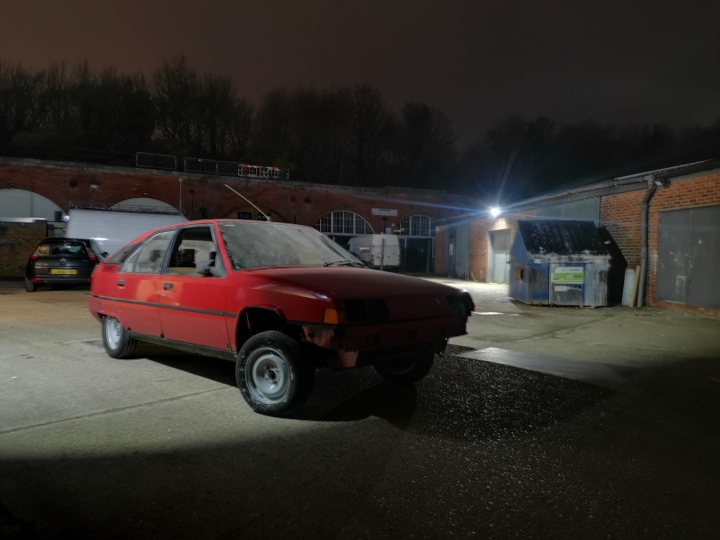 Driven outside for the firs.......ah, yeah. That bit. Right, so you know for ages and ages, that in previous posts I kept alludiing to something going wrong? It was quite a clickbaity tactic, I'll admit, and it kept literally one of you on the edge of your chair! But, I kept suggesting that all was not well, and that there were choppy waters ahead etc.? Do you remember that? No? Well, that was a waste of time, wasn't it. OK, so to the problem! Yes, it's outside. It's there, because I pushed it there. Why did I push it, you ask. Well, that would be because it wouldn't drive. Ya, really. |
| |
|
|
kitch
Part of things
  Counting his chickens
Counting his chickens
Posts: 157 
|
|
Jun 18, 2020 20:04:19 GMT
|
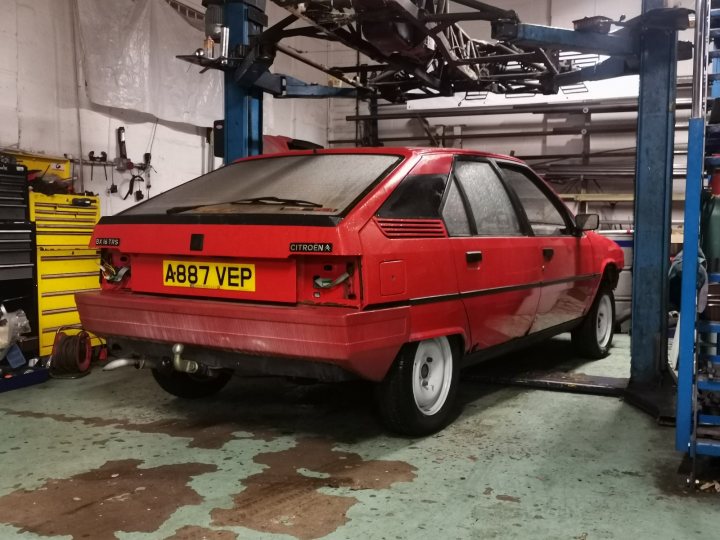 So, one 1983 Citroen BX. It hasn't been on the road since 2007 (at least). It's now raising itself under its own power, which it didn't do before, but it is no longer mobile, which it was before. It seems there is a law of sod, and it has me bang to rights. It didn't take me too long to figure out what had happened, however. It was seemingly selecting gears just fine, though the speedo wasn't working, so I knew the output side wasn't turning. I decided to remove the driveshafts (again) to see if I could learn anything, as although I could remove the end cover on the box itself (to see if the input shaft was turning 5th gear) I felt that it was unlikely to be something deep inside the box, as the car drove before without issue (not to mention the box has only done 17k miles!) A real headscratcher for a while, as I literally hadn't touched any of the related componentry other than to remove and refit the drivesha..... ...ah. I wonder! I did start the engine initially without the driveshafts in, and no gear oil. I fitted them after I'd confirmed it ran, and could carry on going back together. The car wasn't in gear, so no heat or friction to cause an issue. The only possibility is that there was enough inertia in the transmission while the engine was running to rotate something (like when you jack up a car with the engine idling, in neutral, and then spot the wheels slowly rotating). Thing is, I'd done that plenty of times with BXs before, with no issue. Why would this be any different? In a somewhat baffled state, I consulted other humans afflicted with the same BX disease I have, to see if they knew anything of it. I was thinking I'd done something bad to the diff, but couldn't think what. It was suggested that on the 1400 'suitcase' engine (aka XY, or Simca engine), removal of both driveshafts causes the differential to fall apart internally! This sounded crazy, and my BX isn't a 1400 either, but nevertheless I decided to pick up the Haynes manual and see if it mentioned this somewhere. It was a different engine, but it might be a clue. In the end, it was better than a clue; it was the answer! There was no mention of the XY differential suffering with this problem, but, listed under the XU5 (the 1.6 lump I have), was a sentence that described how on the earliest versions of the BX (and they don't get much earlier than this one), you had to fashion a tool to leave in place of a removed driveshaft, before you remove the other side. The planet gears in the diff aren't pegged, and the only thing holding them into the differential, are the driveshafts (a splined design which posted directly into the planet gears themselves). Later cars (such as literally every other BX I'd removed the driveshafts on) have pegged diffs (presumably after main dealer technicians started sending envelopes full of poo to the production committee who signed them off), and so that's why I'd never encountered this before. And, of course, I'd started the engine with no driveshafts in, so it's possible that, had I not done that, the interferance fit of all the parts might have held them in position, but as soon as I fired up the engine it all moved, with predictable results. As far as I was concerned, this was a load of curse word dogshite, and I was not happy. I didn't want to take the gearbox out and disturb all the lovely original untouched-since-Rennes '83 fixings, and other original goodness (the same goodness that will no doubt fail as soon as I put it on the road, and remind me that I'm so stupid sometimes). However, happily, Citroen had already planned for this eventuality, by making the differential REMOVABLE! Yes, a removable differential, on a boggo, humdrum family hatchback! Access is tight(ish), but I've done it on my 16v, and on a 205 GTi in the past, so this should be simple. I didn't need to remove the driveshaft (as the prick was already out), so the next step was to remove the speedo drive casing and output bearing carrier: 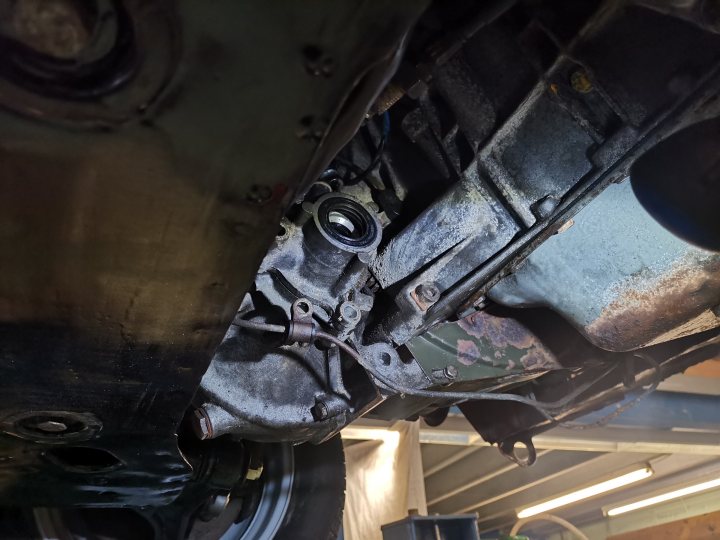 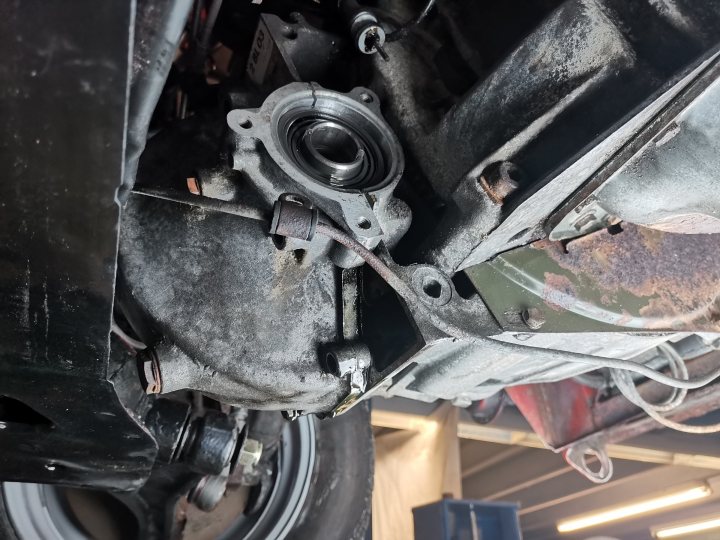 (note the speedo cable end dangling there, and the gearbox ID label, which is still as bright as new! 2BL 03 is the gearbox code, which would identify the ratios in this box....if I was so inclined to look for them....which I'm not.) Of course, if I get the diff off and find no issue, it's back to square one, but on the basis I can't feel any spline slots in the input bores, I'd say it's a pretty good indication! With the fixings removed, I start easing the diff forwards. I've had to ratchet strap the engine to something immobile and winch it forwards to give me some more room at the back, because some cockend put the subframe back in. 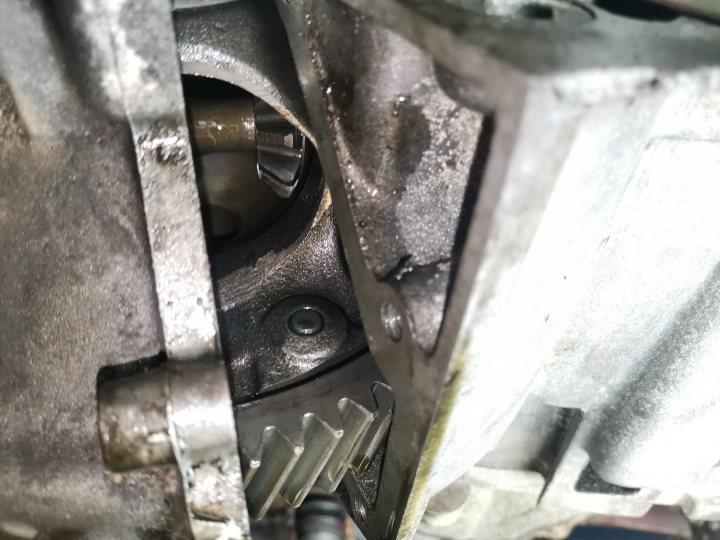 Yup....there's definitely an absence of planet gear there! Moments later, a metallic 'Chinese'!: 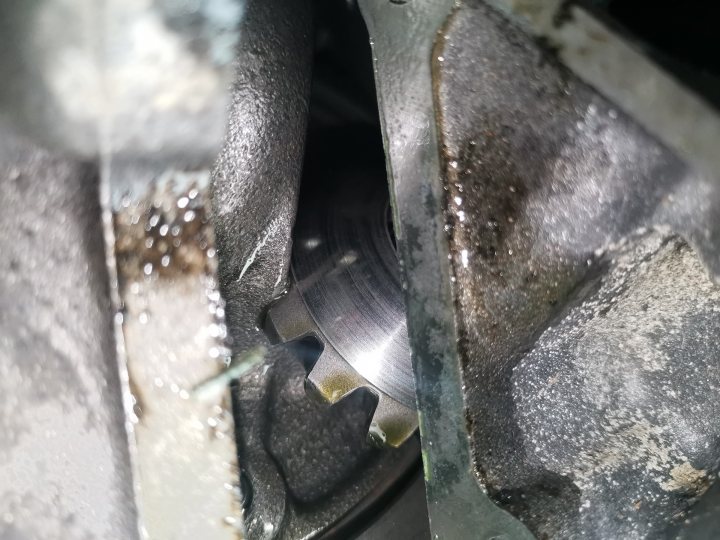 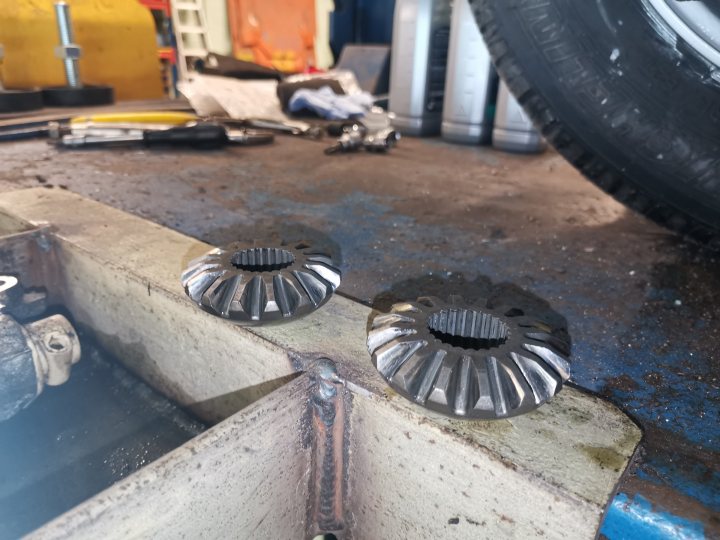 Two loose cogs, sittin' on the deck. First I lol'd and then I said 'feck!' Well, if the cogs fell out, in theory they should be able to fall back in, so that's the plan. To make this possible, I decided I needed to fashion a tool, as per the Haynes B.O.L. In the manual, they suggest cutting down a broom handle, but that is well too traveller for me innit. I locate an old driveshaft, and chop the end off:  Boom! One differential alignment and cog holder-inner...tool. Now I can attempt to refit both evacuated cogs, and make the BX mobile (under its own steam, not mine) once more! 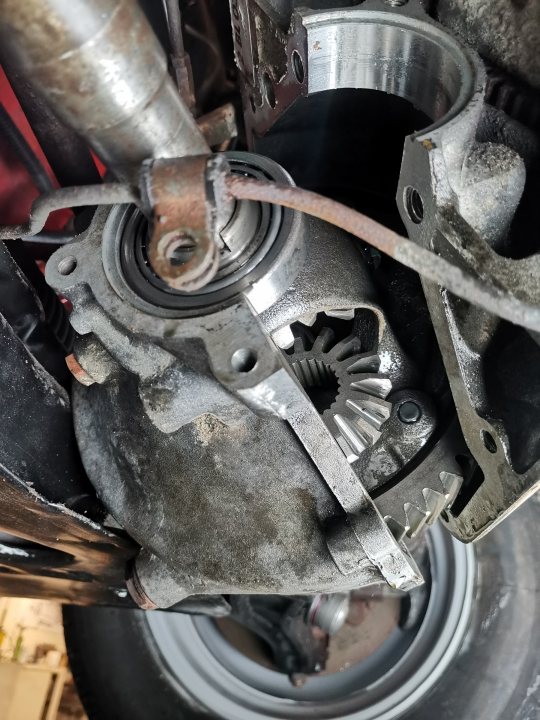 Trying to fit the planet gears though this tight gap was a bit like trying to push hot-spaghetti up a cat's  (nicked that from the tale of Vulcan 607). It's probably not how it's meant to be done, but there isn't the room to remove the diff entirely without unshipping the subframe again, and-a theres-a no-a way-I'm-a doing-a that. This went on for some time (trying to fit the gears back in, not trying to type like an extra from a Dolmio advert. Eventually, I was successful, as can be evidenced by the difference in the two images below: 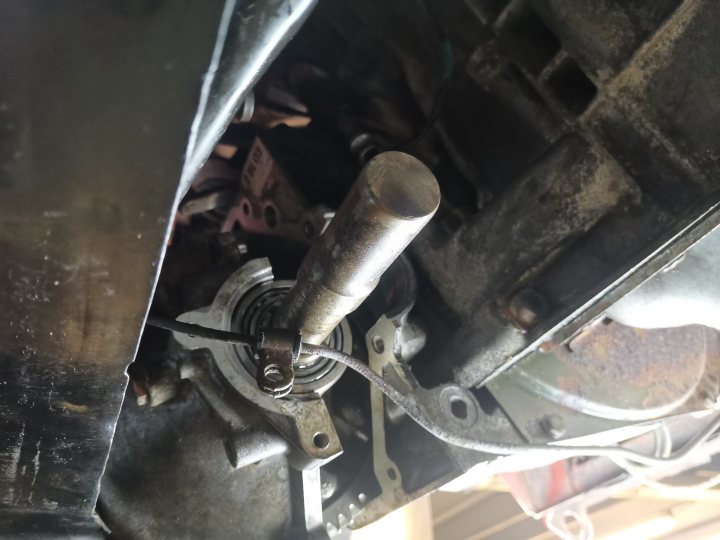 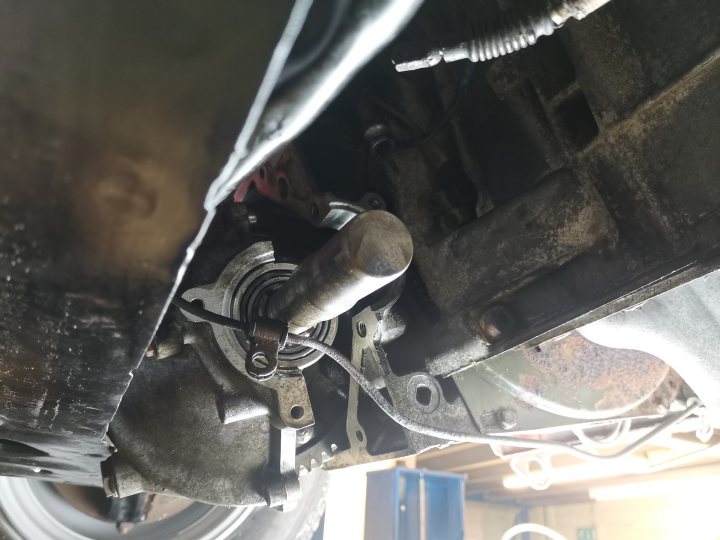 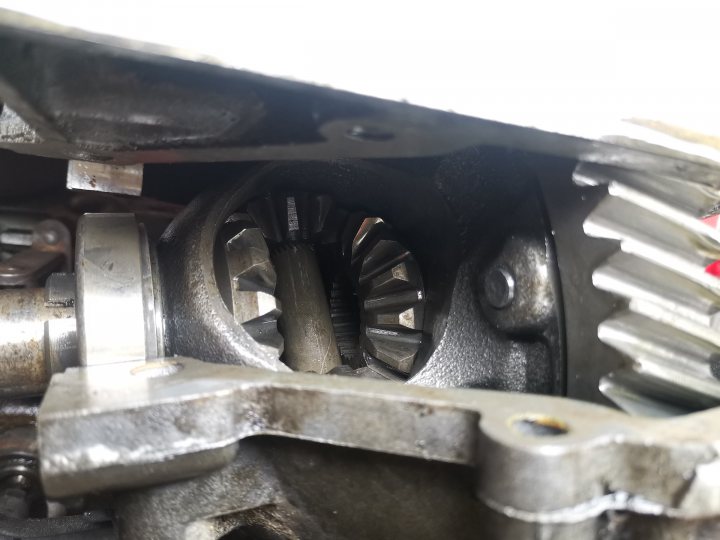 Guess who's not going to do that again?! :rolleyes: As a means of celebration, I fitted the wheeltrims to the wheels and took it for the first proper bimble....around the yard! 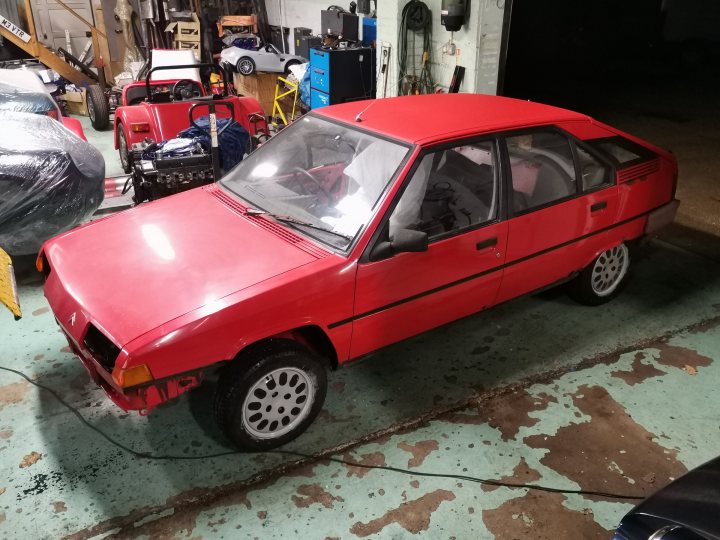 The craziest thing? The suspension spheres are 36 years old, and by rights they should be rock solid by now. Are they? No! It's smooth and supply, and they're working perfectly! :laugh: Old French cars, eh? They're so unreliable! |
| |
|
|
vulgalour
Club Retro Rides Member
Posts: 7,287
Club RR Member Number: 146
|
|
Jun 19, 2020 18:08:08 GMT
|
|
Your updates are irregular and joyous. I'm so glad it was just you that had to do battle with those cogs and not, say, me.
|
| |
|
|
|
|
|
|
|
Writing stuff like this seems a bit self-indulgent, but for me it's an excellent way of keeping a diary of what I've spent my life doing, because I sure as hell won't remember! welcome to retrorides  ! p.s good updates and work on the gearbox, cross pin hell !! |
| |
|
|
|
|

















 |
|




 |https://thumbsnap.com/rcKFfRHT"]
|https://thumbsnap.com/rcKFfRHT"]























 ,
,





































 (nicked that from the tale of Vulcan 607). It's probably not how it's meant to be done, but there isn't the room to remove the diff entirely without unshipping the subframe again, and-a theres-a no-a way-I'm-a doing-a that.
(nicked that from the tale of Vulcan 607). It's probably not how it's meant to be done, but there isn't the room to remove the diff entirely without unshipping the subframe again, and-a theres-a no-a way-I'm-a doing-a that.


